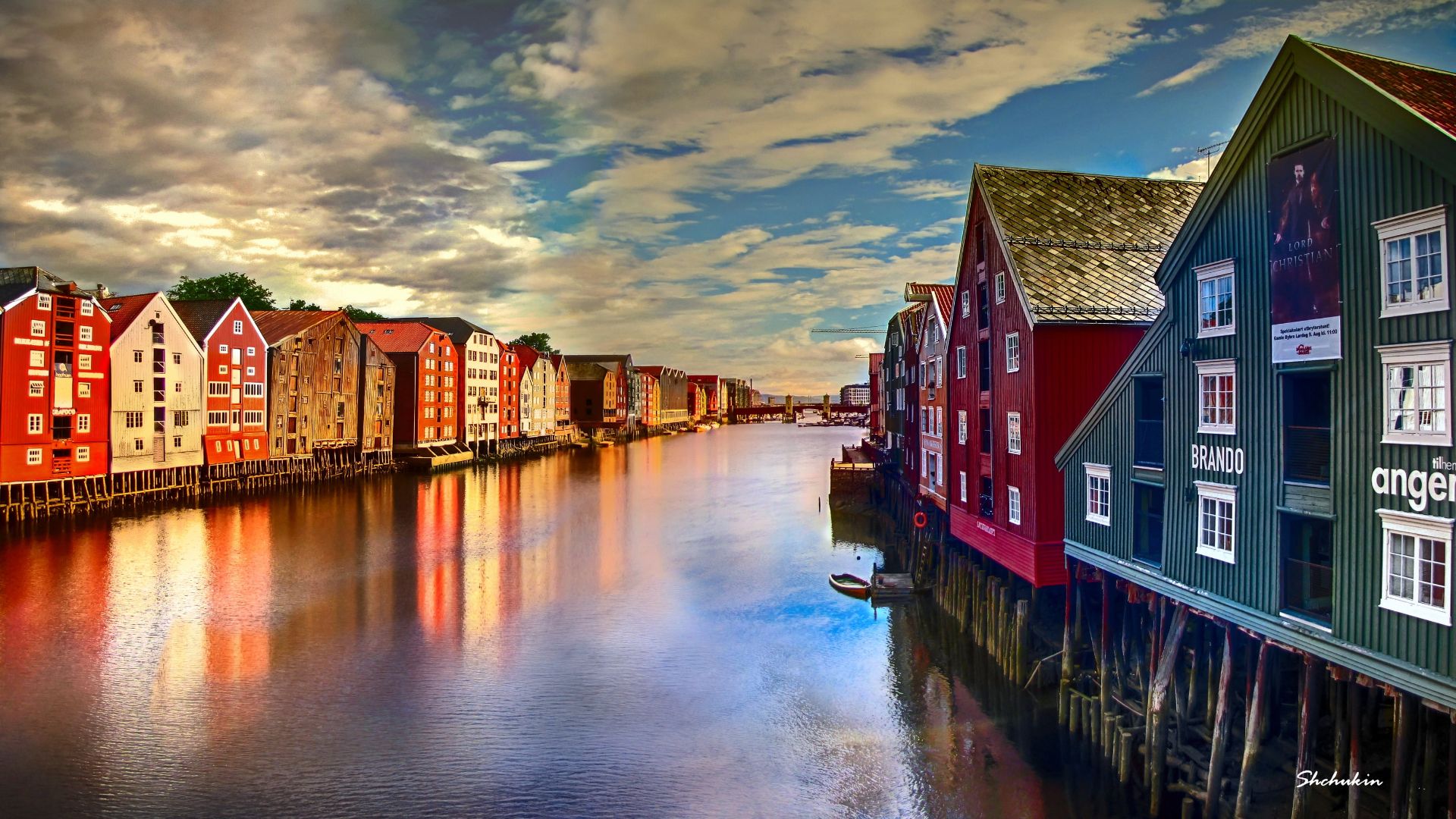Eastertrip 2 - Sea, Rocks and Stockfish
Foillsichte: 18.04.2021
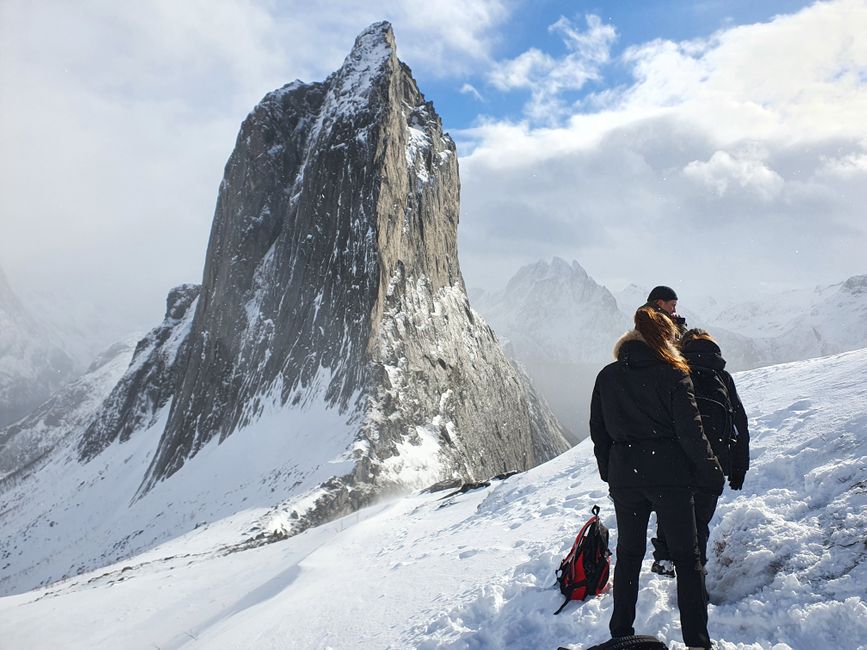
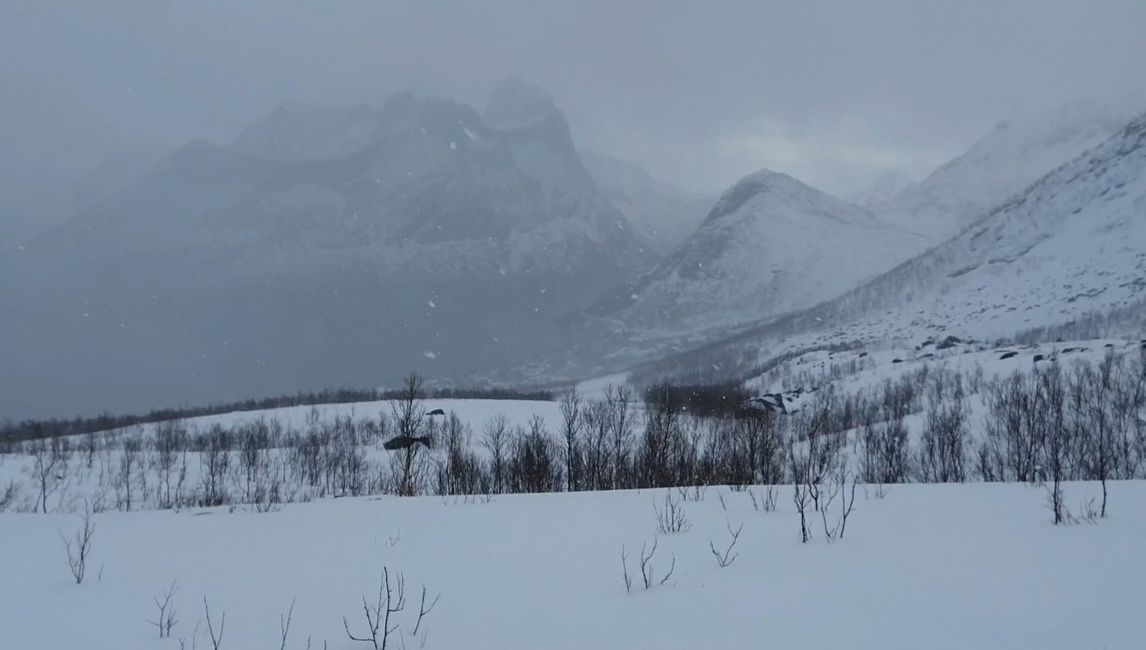
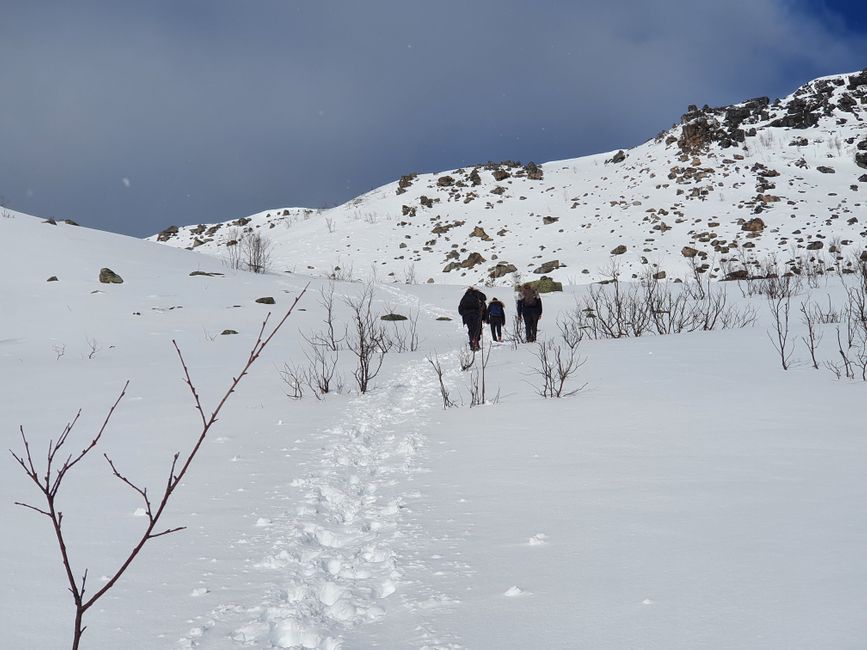
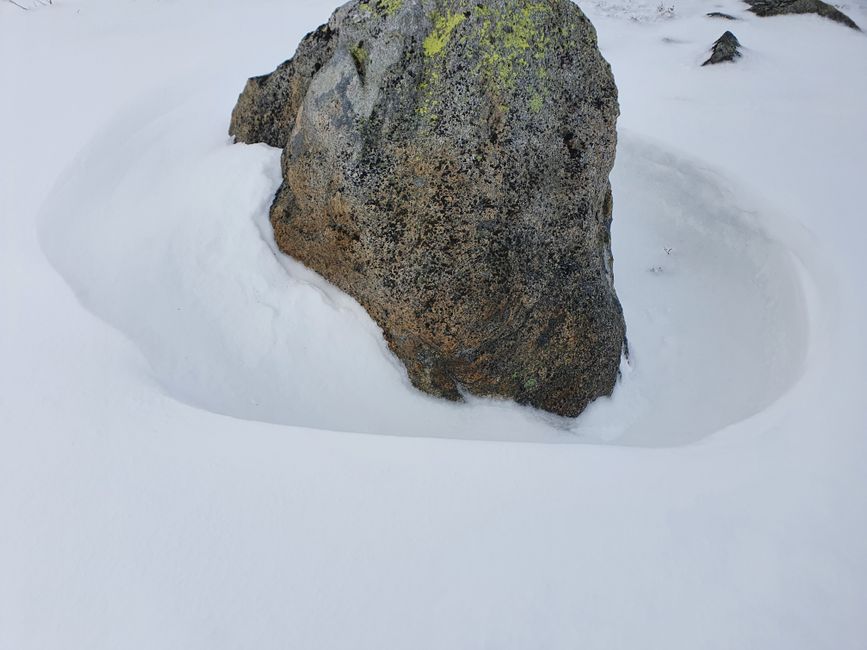
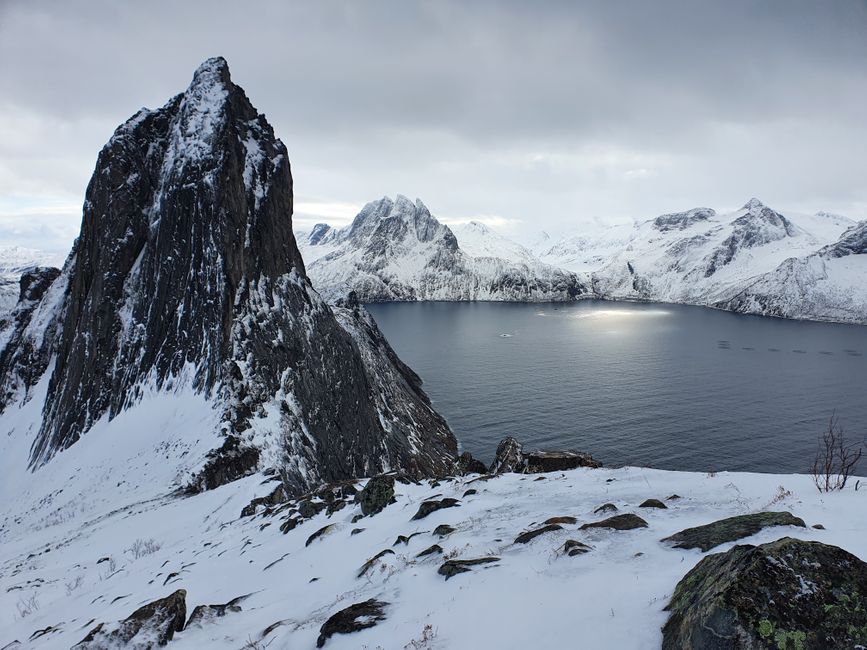
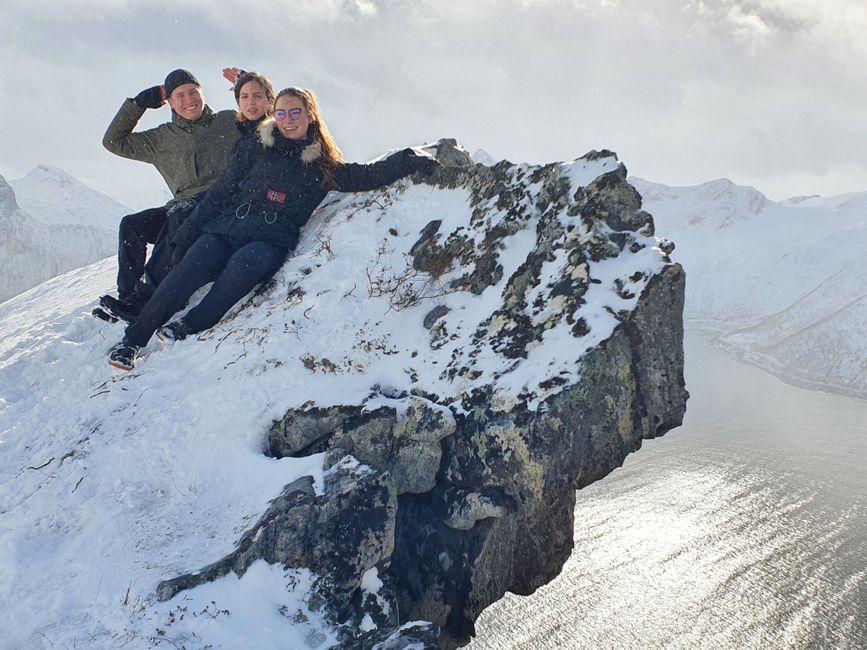
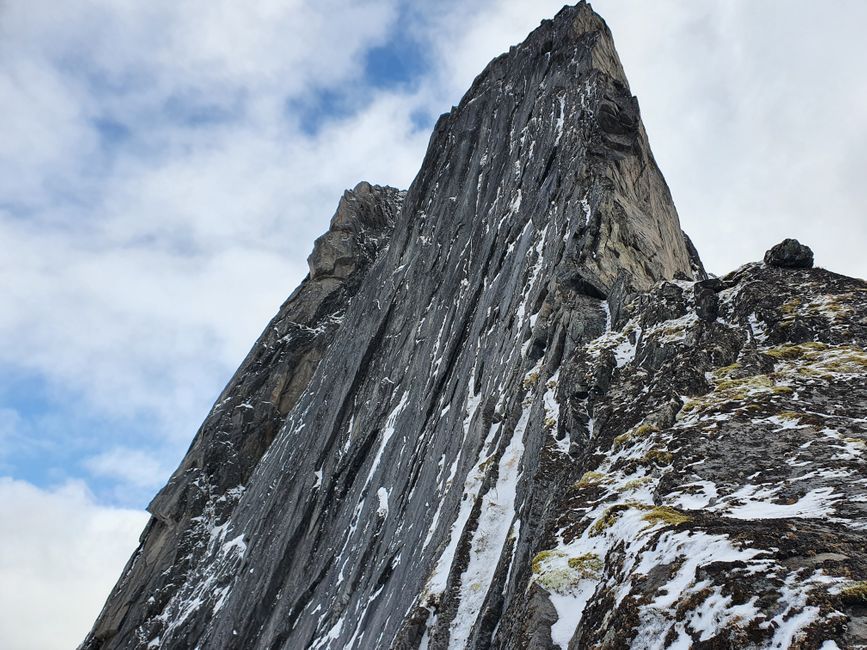
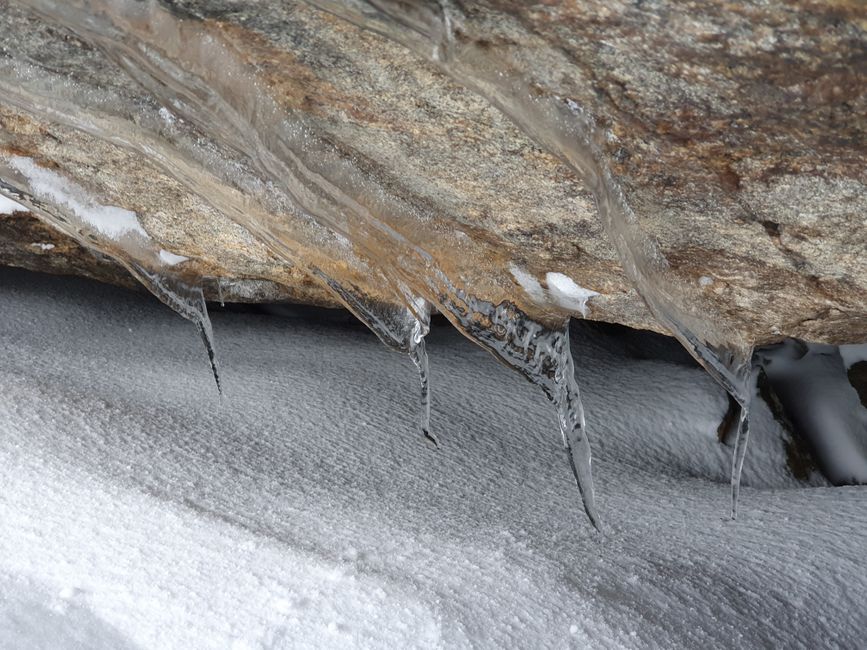
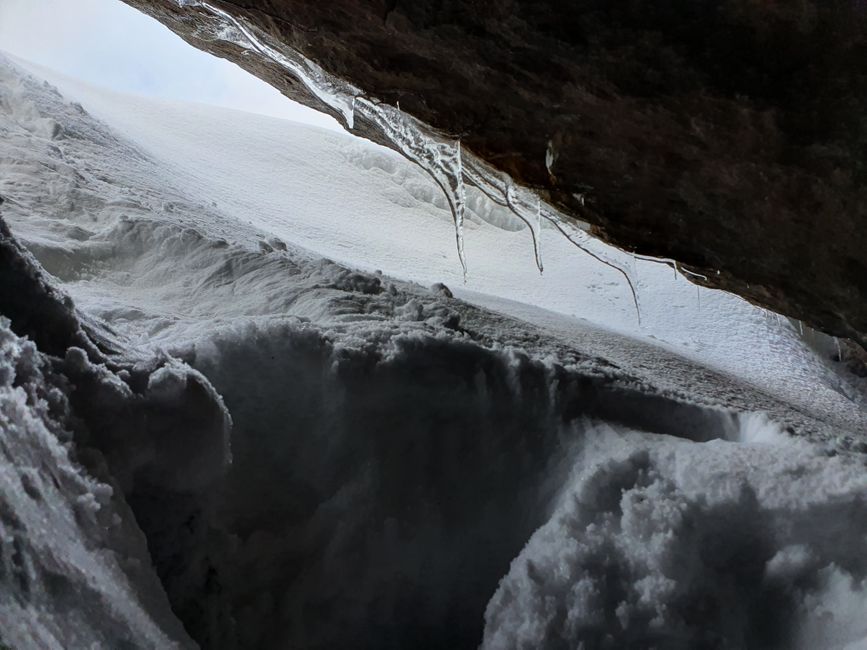
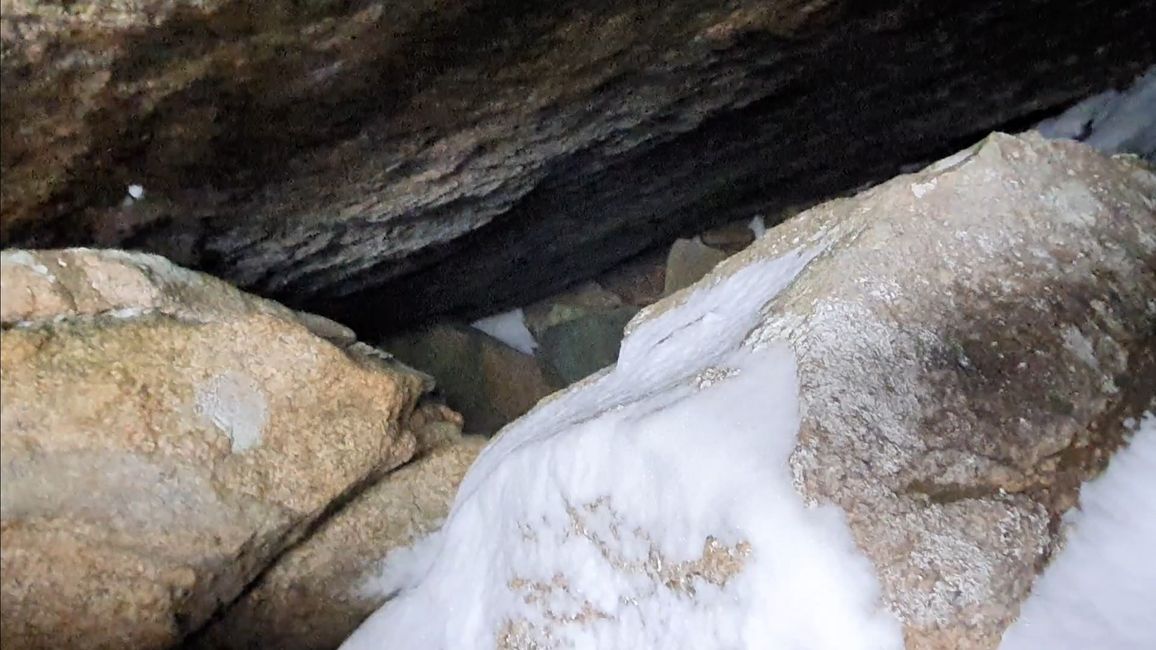
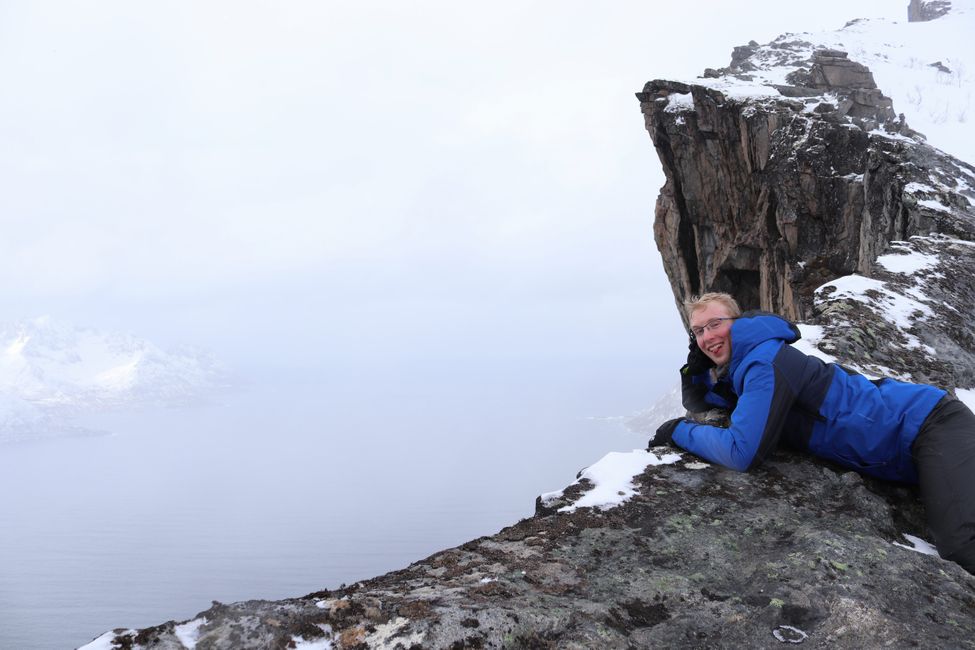
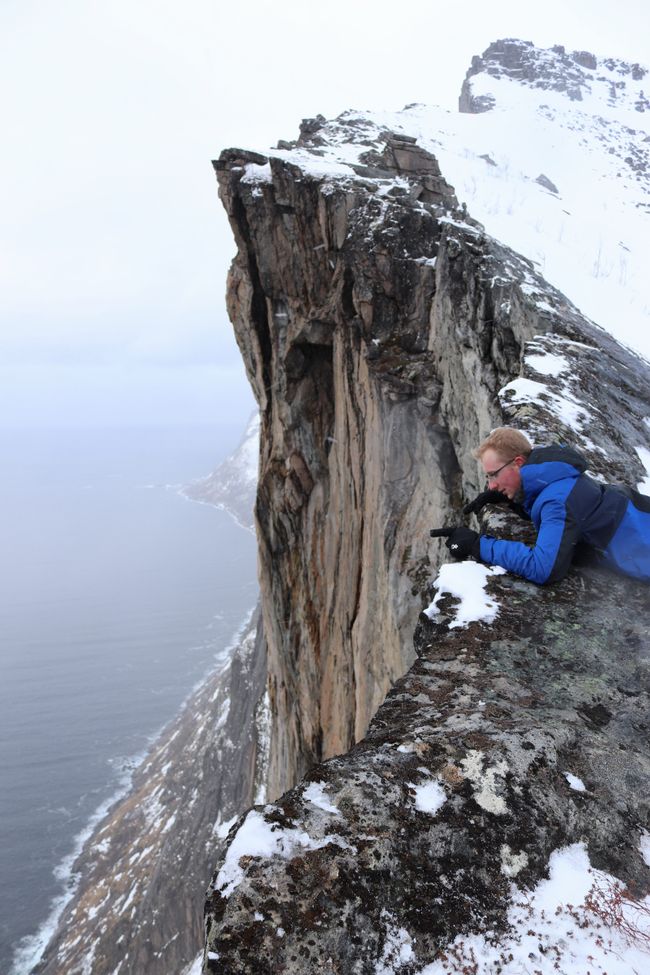
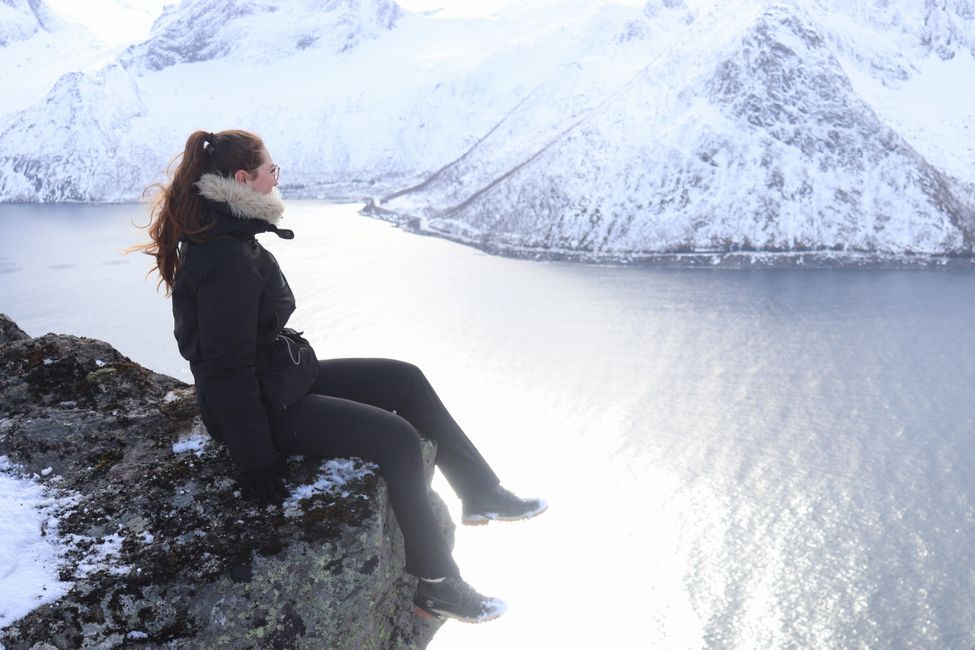
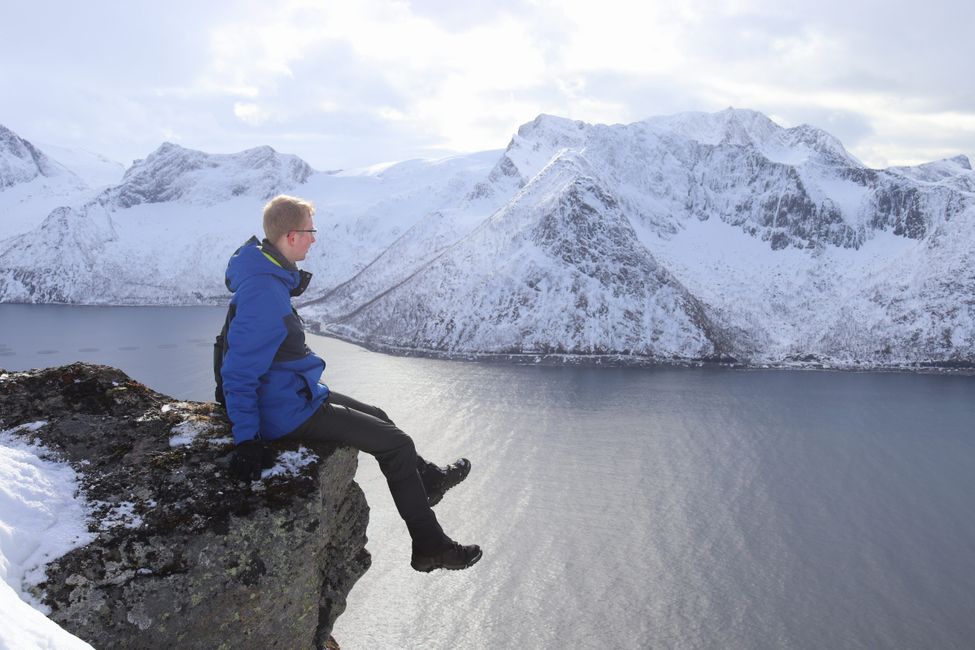
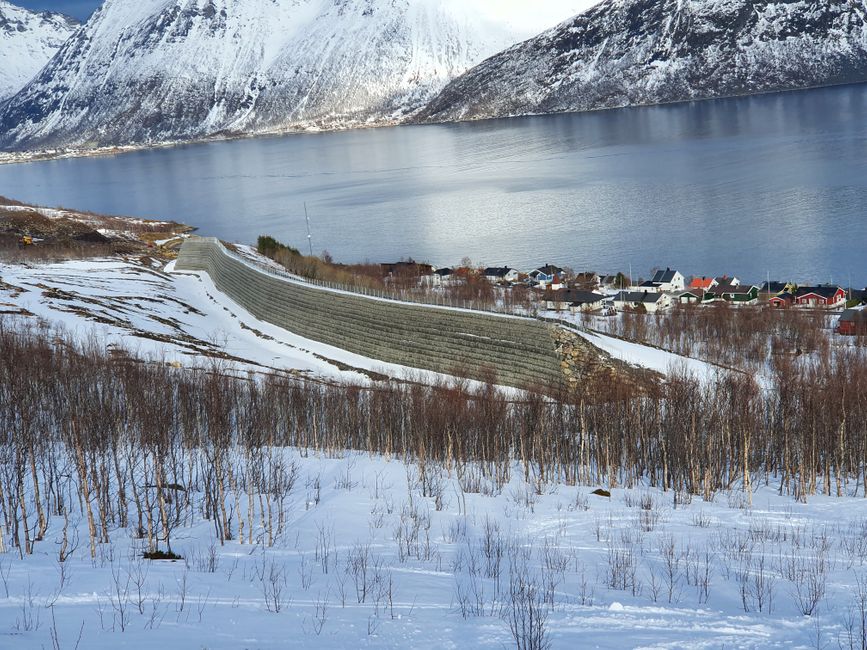
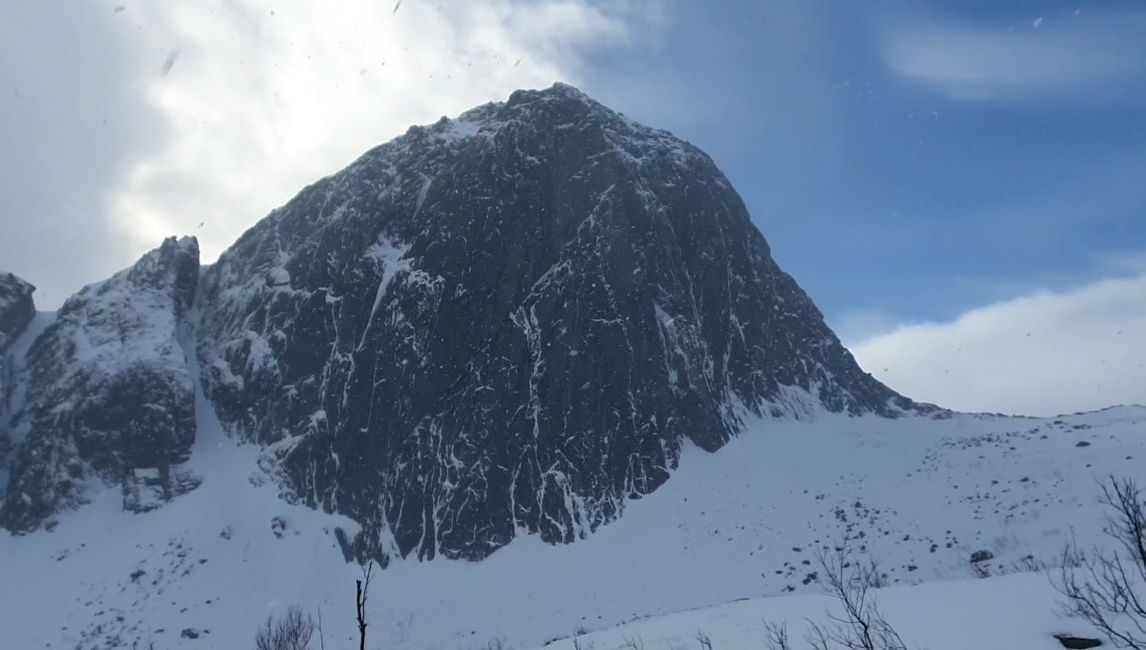
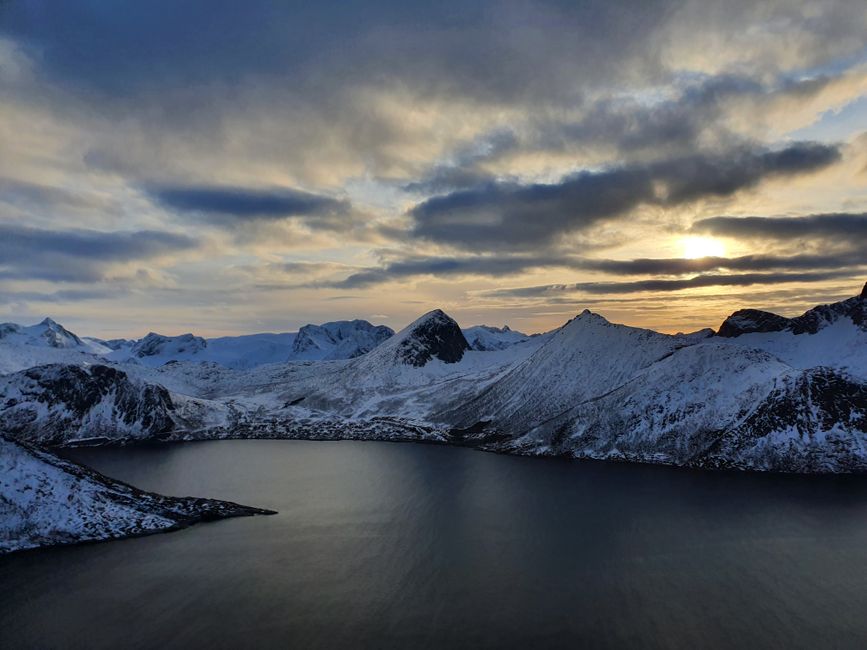
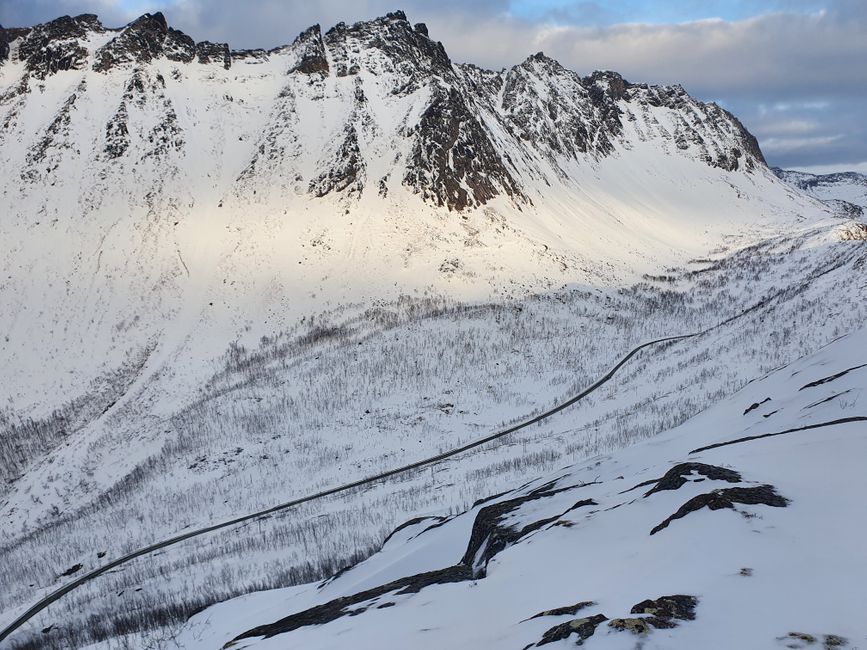
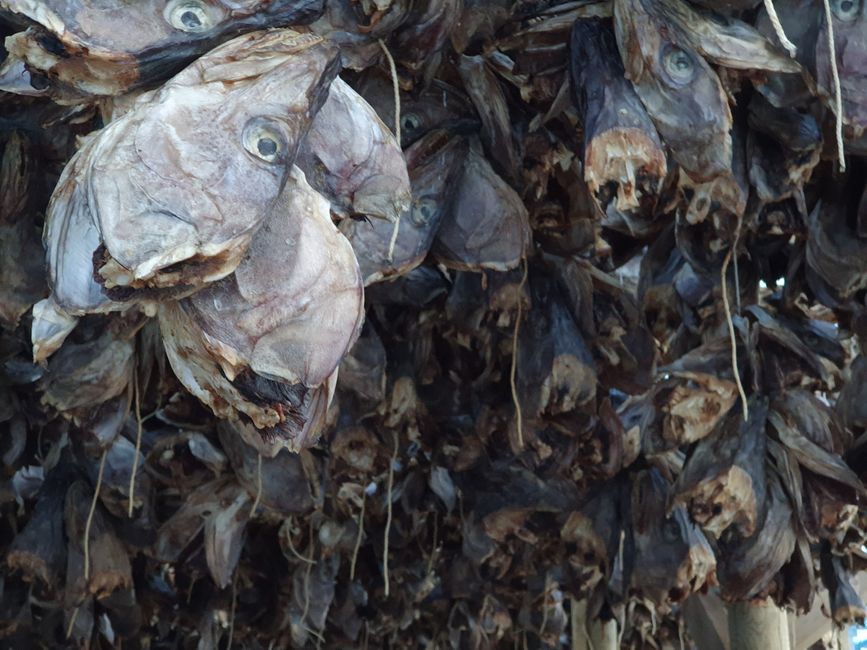
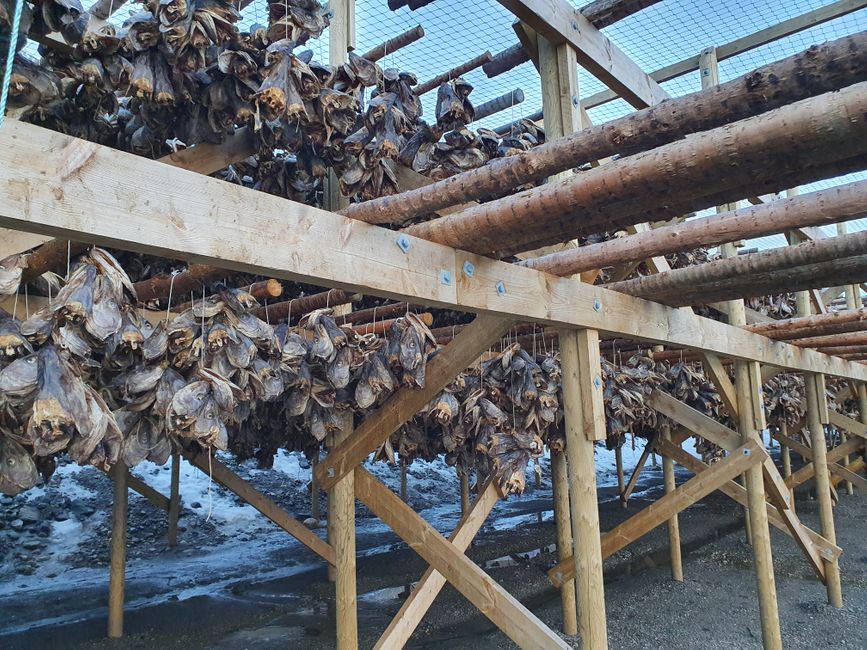
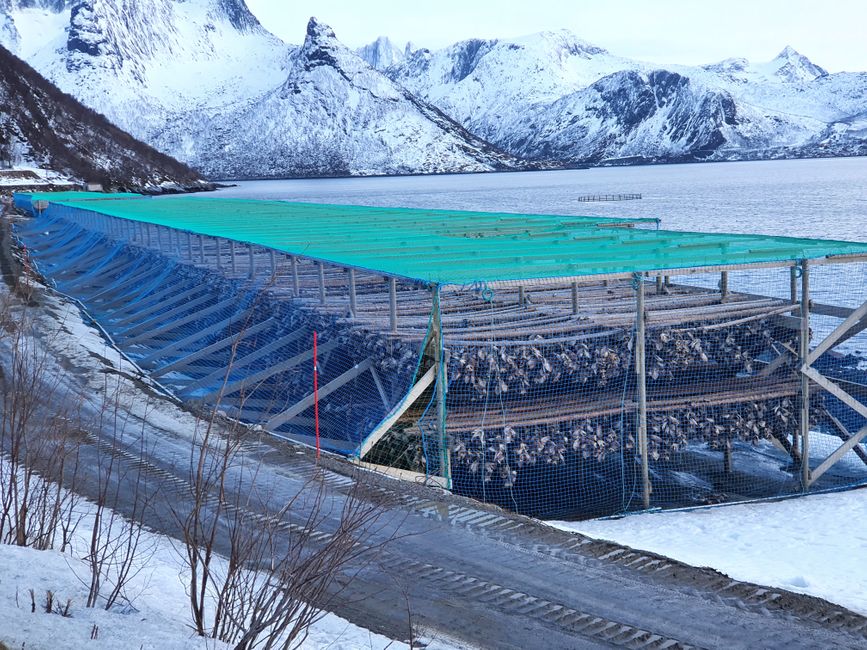
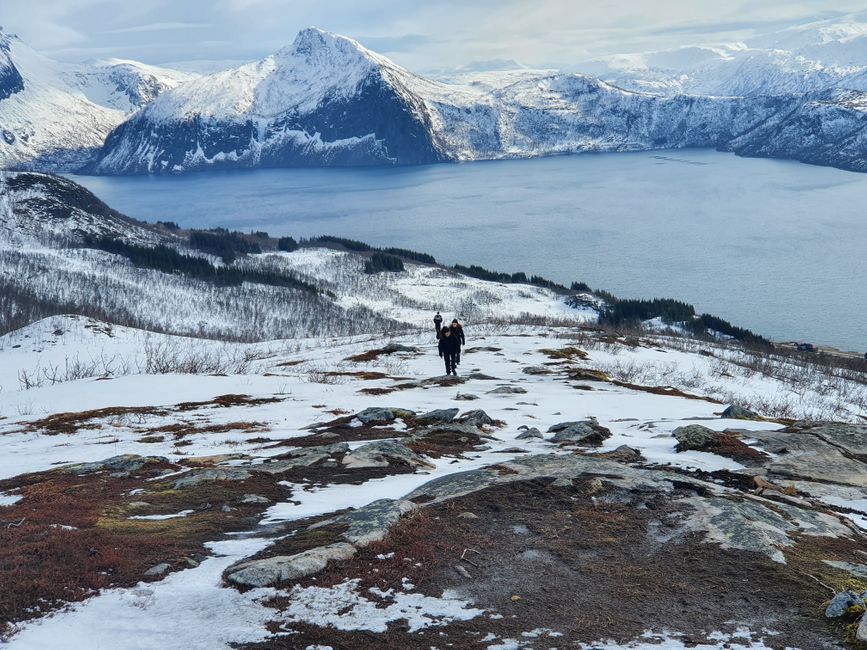
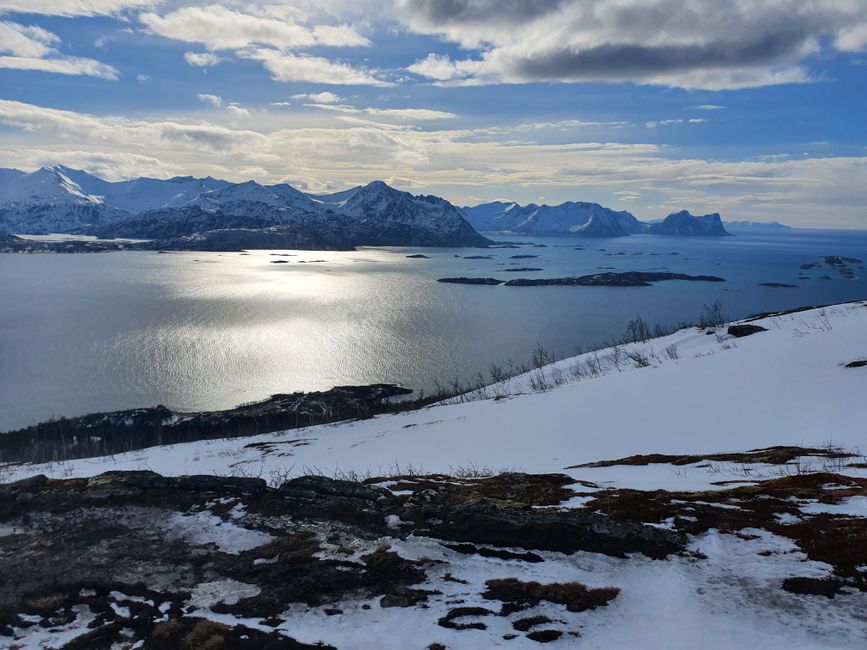
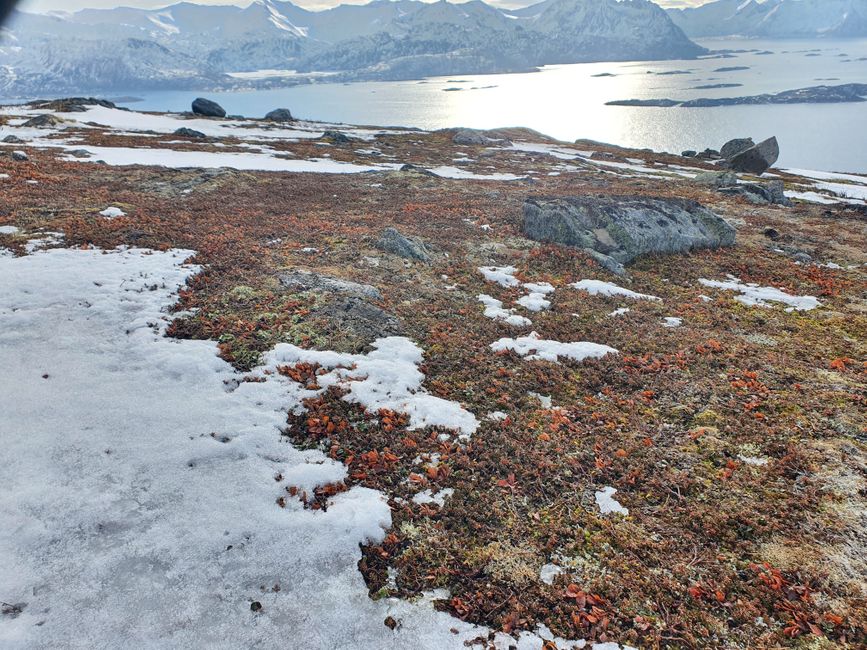
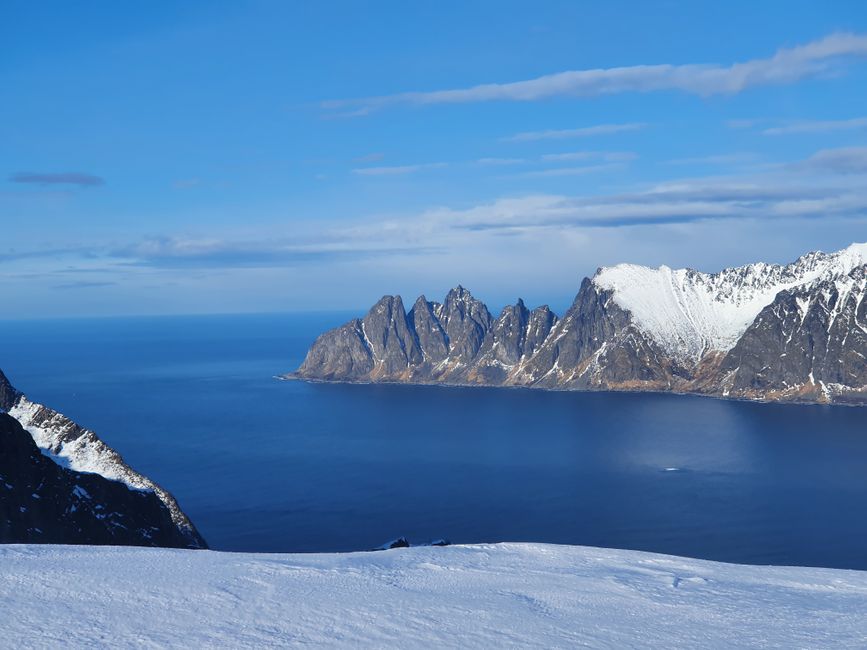
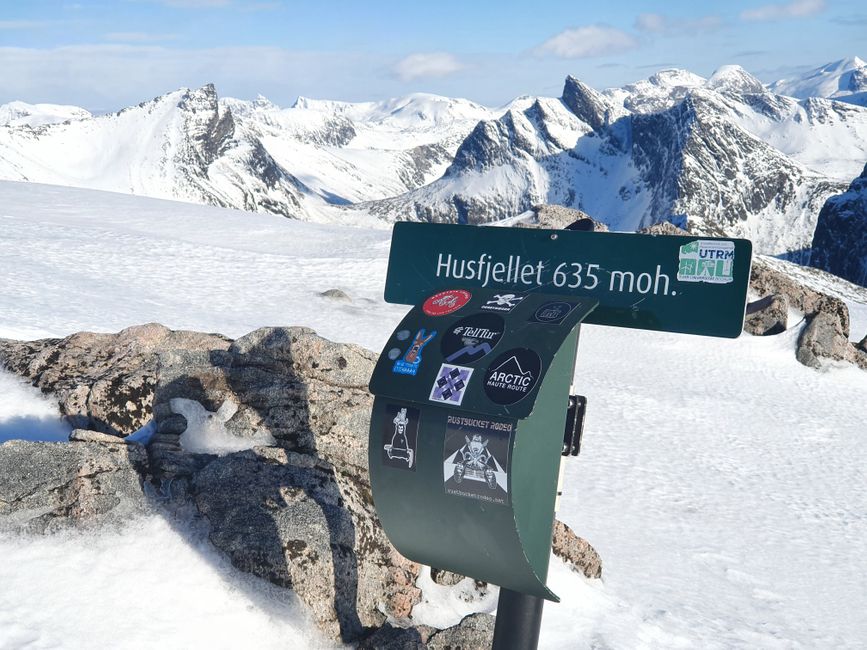
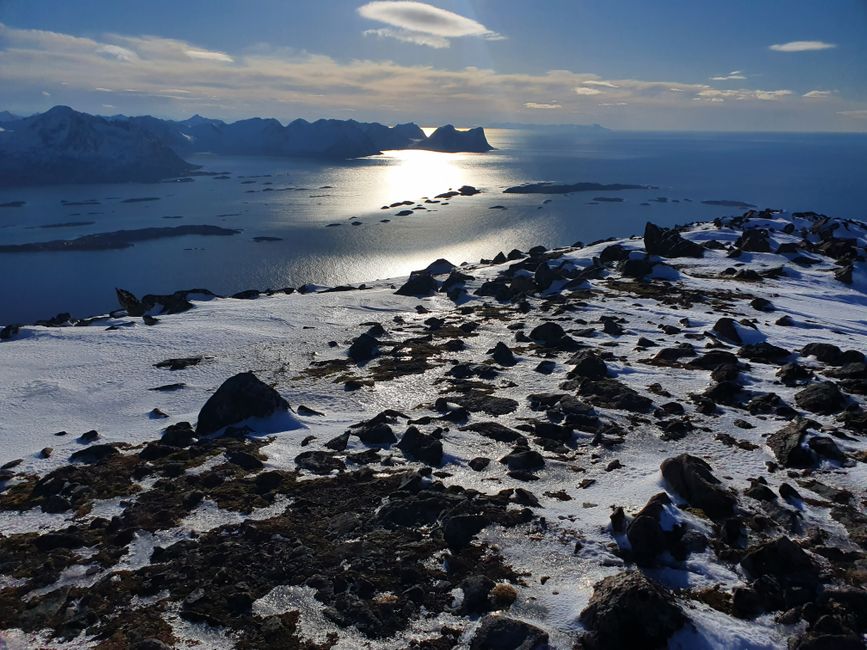
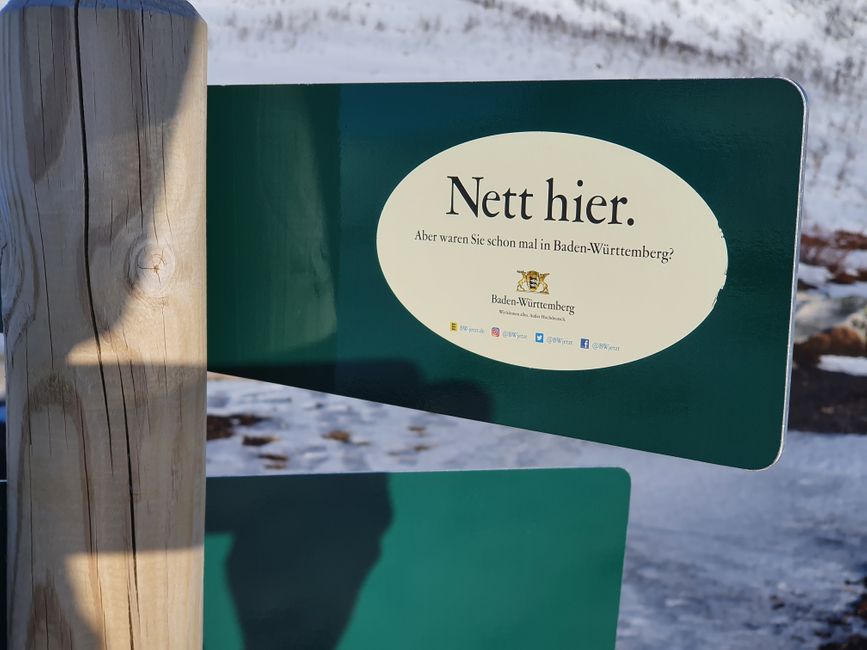
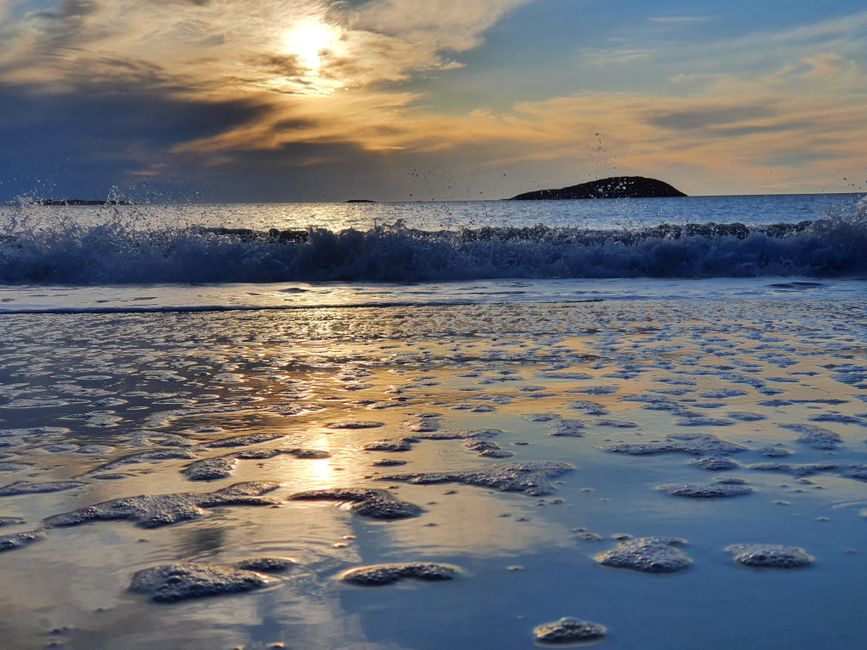
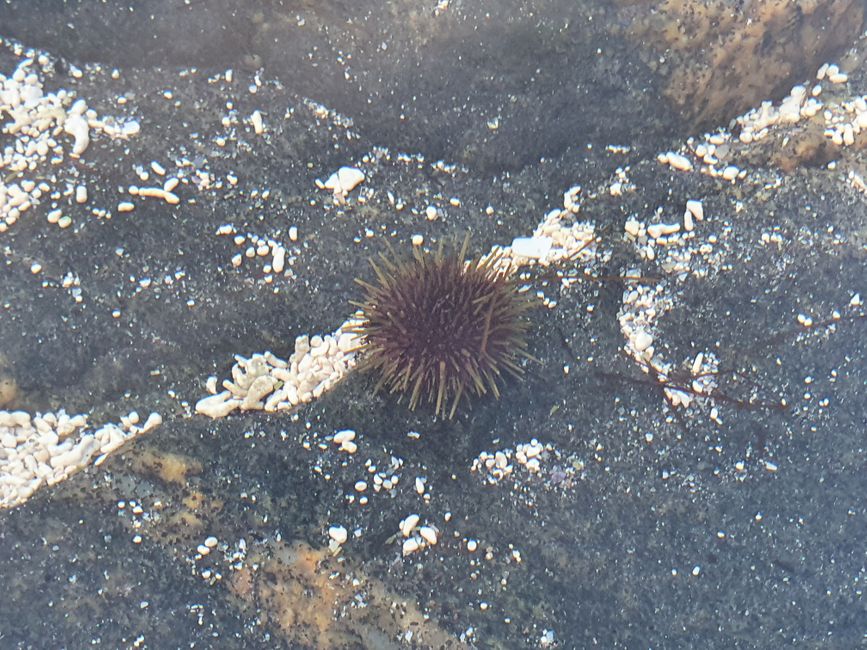
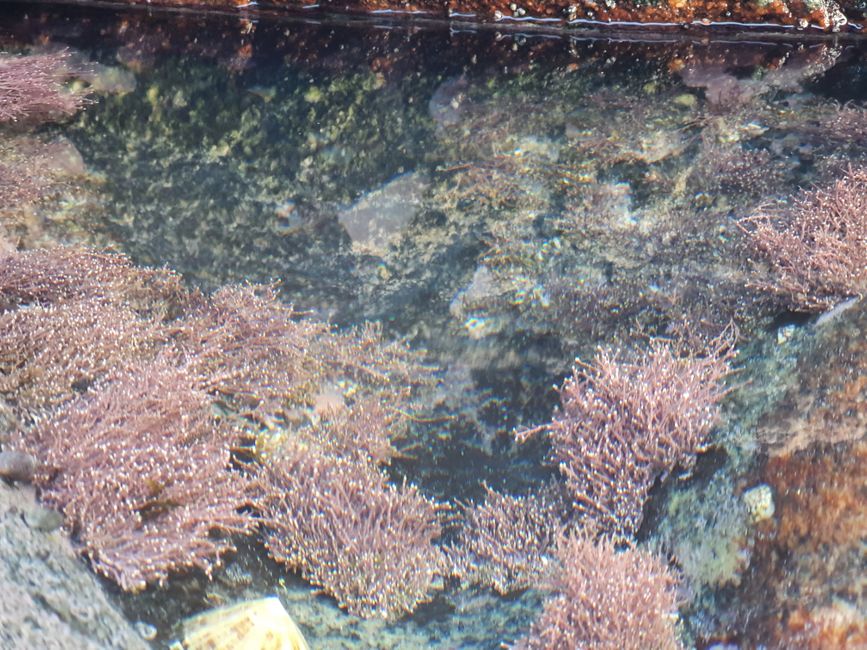
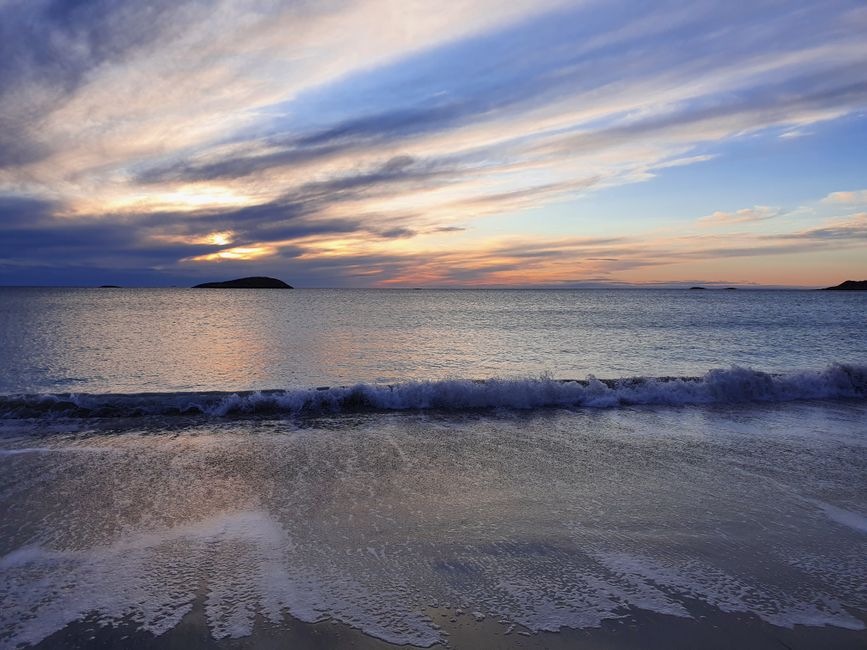
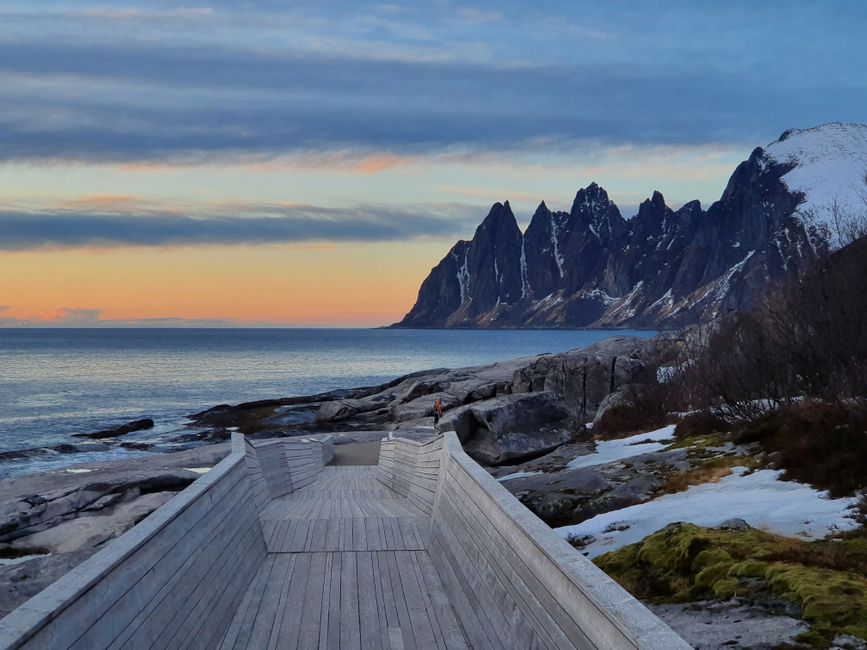
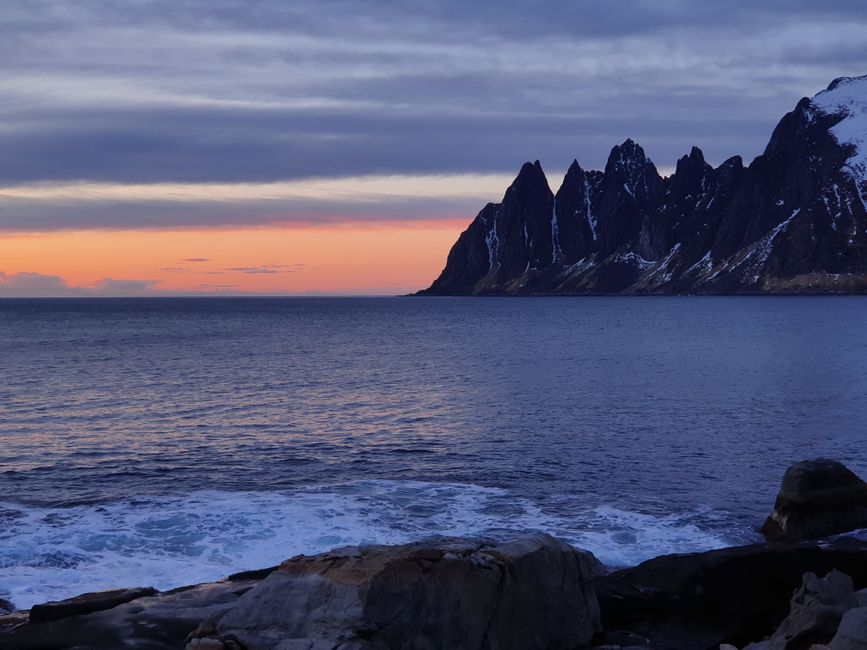
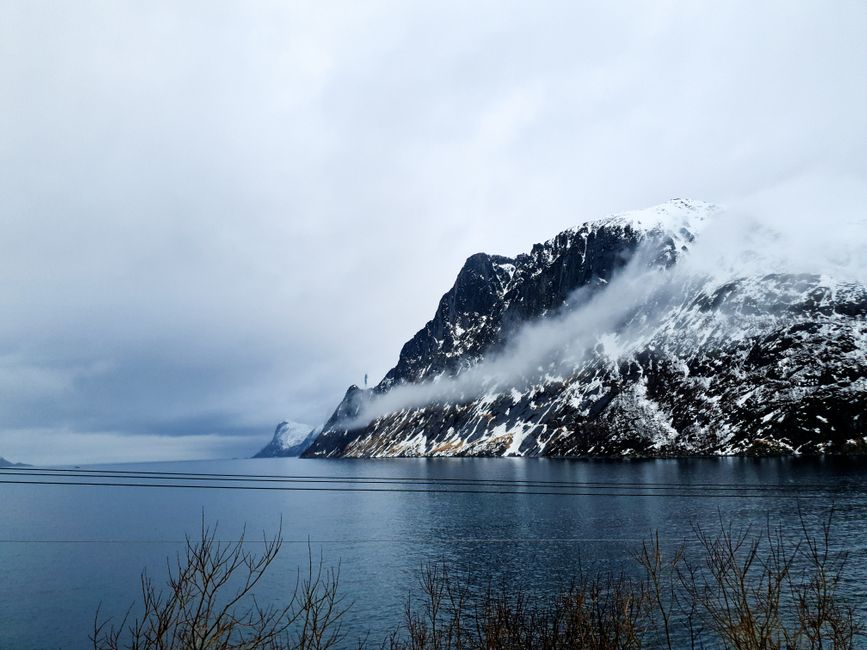
Subscribe to Newsletter
Our accommodation in Senja was a complete house that we rented on AirBNB for 4 nights. Very spacious and equipped with an energy-efficient heat pump for heating. Parking was conveniently available in front of the house, although we needed a running start from the road to get up the snowy driveway (I perfected this maneuver in the following days).
For the full 3 days we were supposed to spend in Senja, we had planned 2 days of excursions and a coastal exploration tour by car for the last day.
Since our accommodation was located in Botnhamn, the big elephant in the room was visiting the nearby scenic spot where the mountain edge steeply drops 400 meters behind two picture-perfect mountain peaks. Usually crowded by the few tourists in Senja, we had the ascent to ourselves with only two scattered groups of hikers. Although the hike was not long, the 350 meters of altitude gain provided a good leg workout. We also put on our spikes to find extra grip for slippery sections, which made the difference between getting stuck and moving forward (the investment in spikes paid off more than we expected). Since the snow in Norway always aggressively tries to get into your shoes, I also equipped a snow guard that I bought here (gaiters work like waterproof knee-high gaiters). Walking through snow that was sometimes 50 centimeters deep under the mountainside was demanding, but the view of the towering summit of Segla in front of us gave us more than enough motivation.

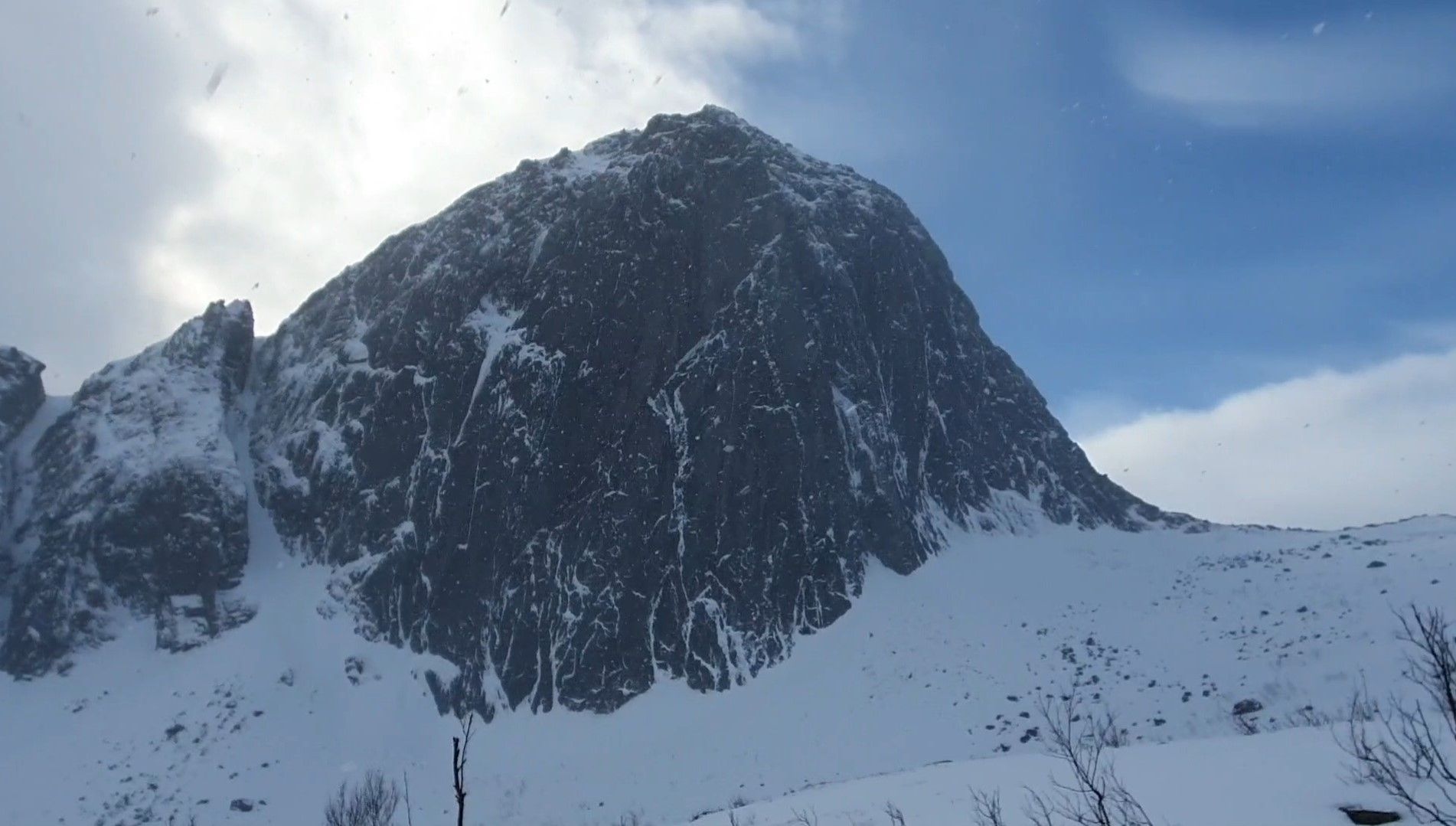

The weather on this day was also unique. Since Senja is located directly by the open sea and the coast is covered with mountain ridges, all sorts of rapidly changing weather phenomena occur. So we started the ascent with clear skies. Halfway up, it started snowing, which was soon dissolved by the occasionally breaking sun. However, any weather contributed to the fantastic scenery.
We also met other exchange students who were making their way down. They came from northern Tromsø and spent Easter "in the south" on Senja. Following their tracks, we reached the cliff edge. At this point, we realized that it was indeed a cliff edge, as it could be found in picture books. With all the butterflies in my stomach and the adrenaline that comes with it, I couldn't share my companions' reservation at all. I crawled to the edge to inspect the sloping, brown-gray glacier-scoured rock and the sea with its breaking waves, which made any perspective useless in the deep.
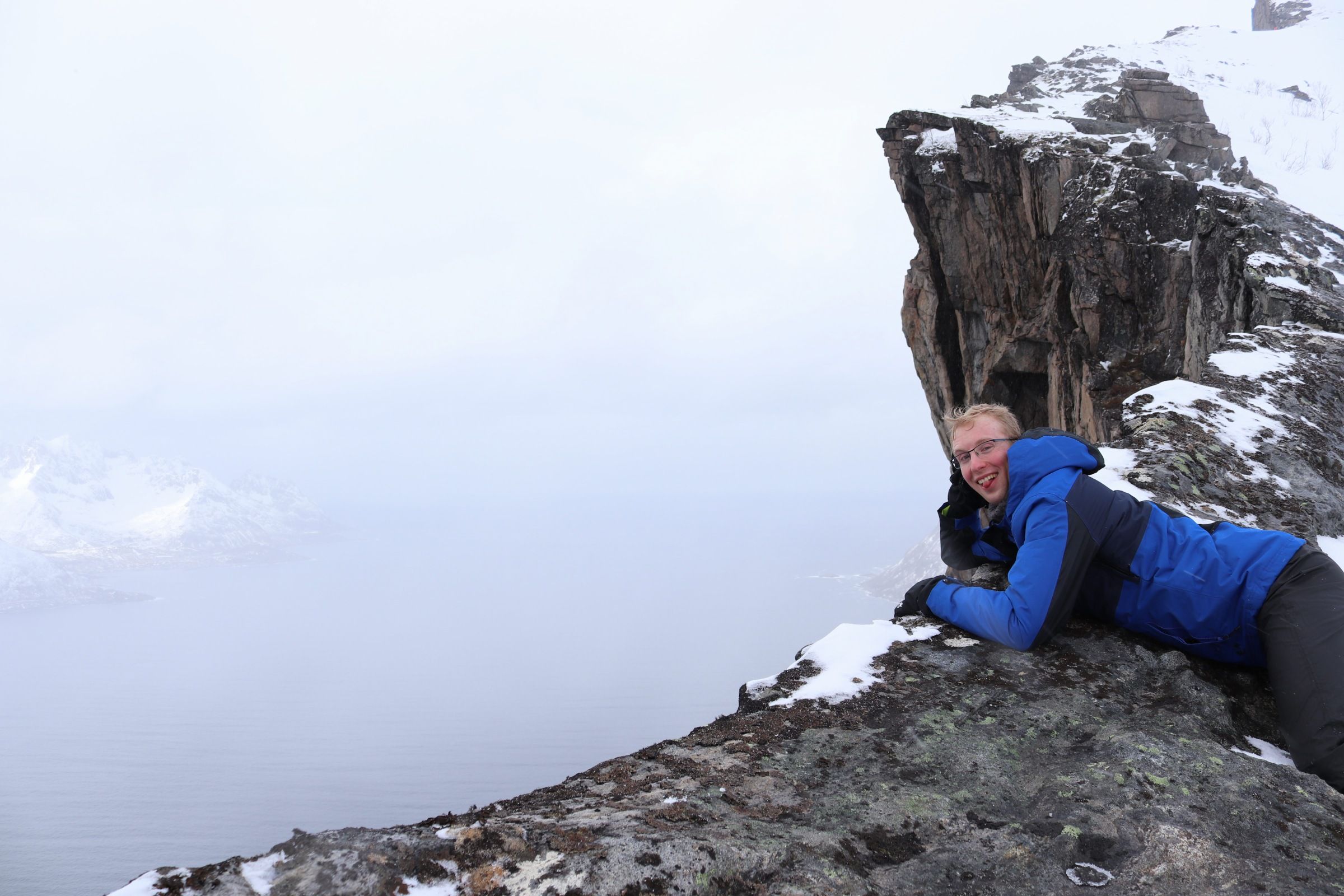
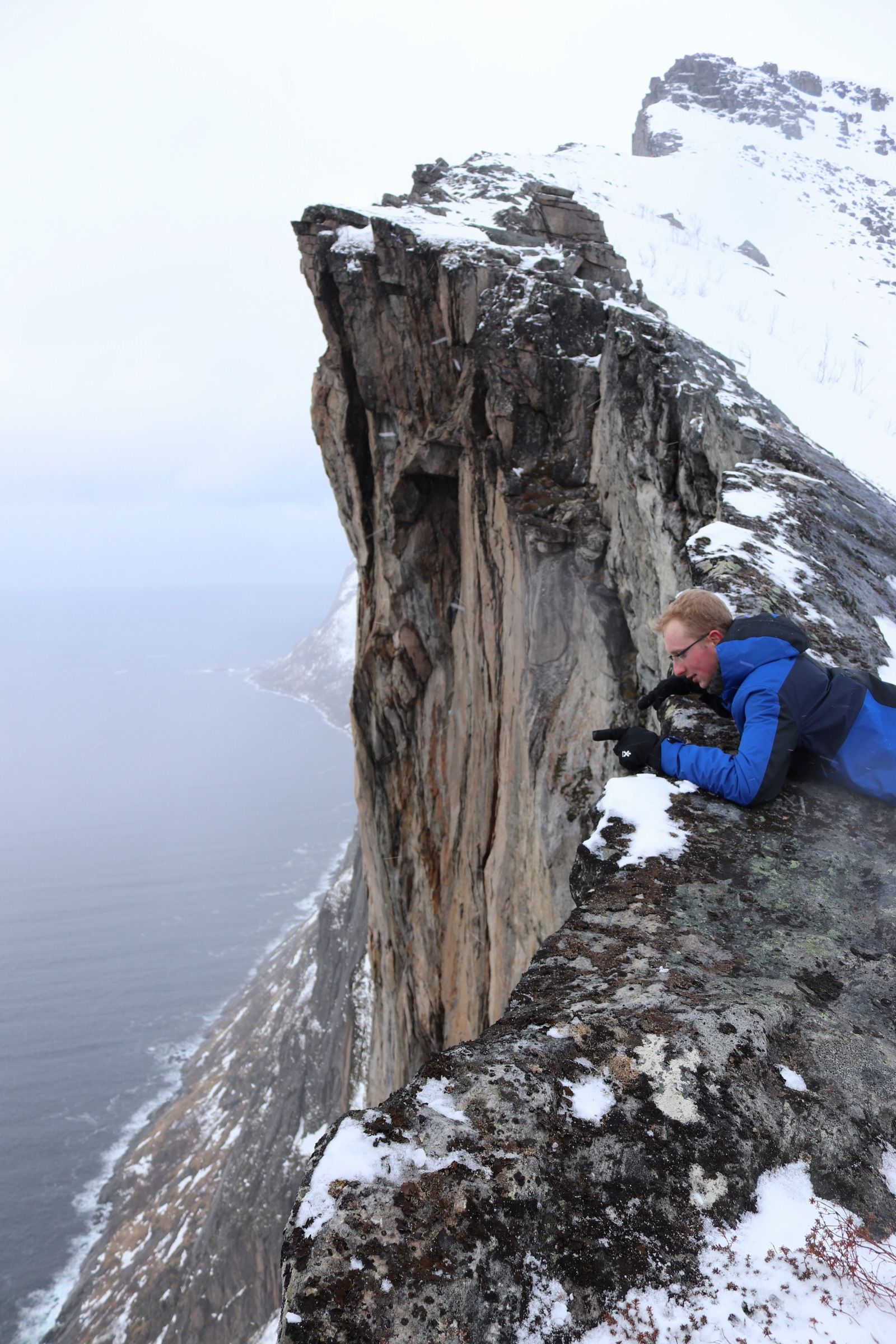
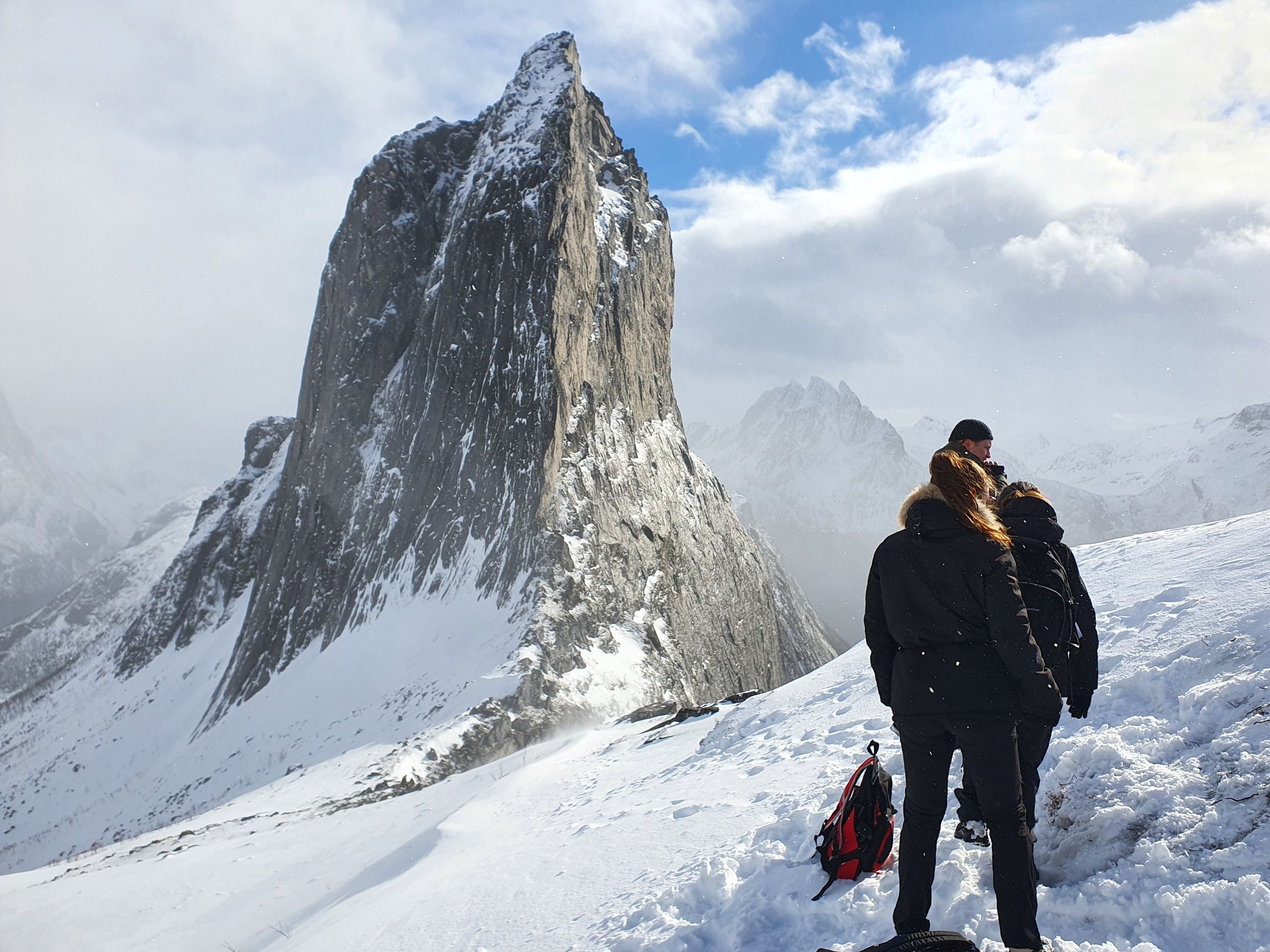
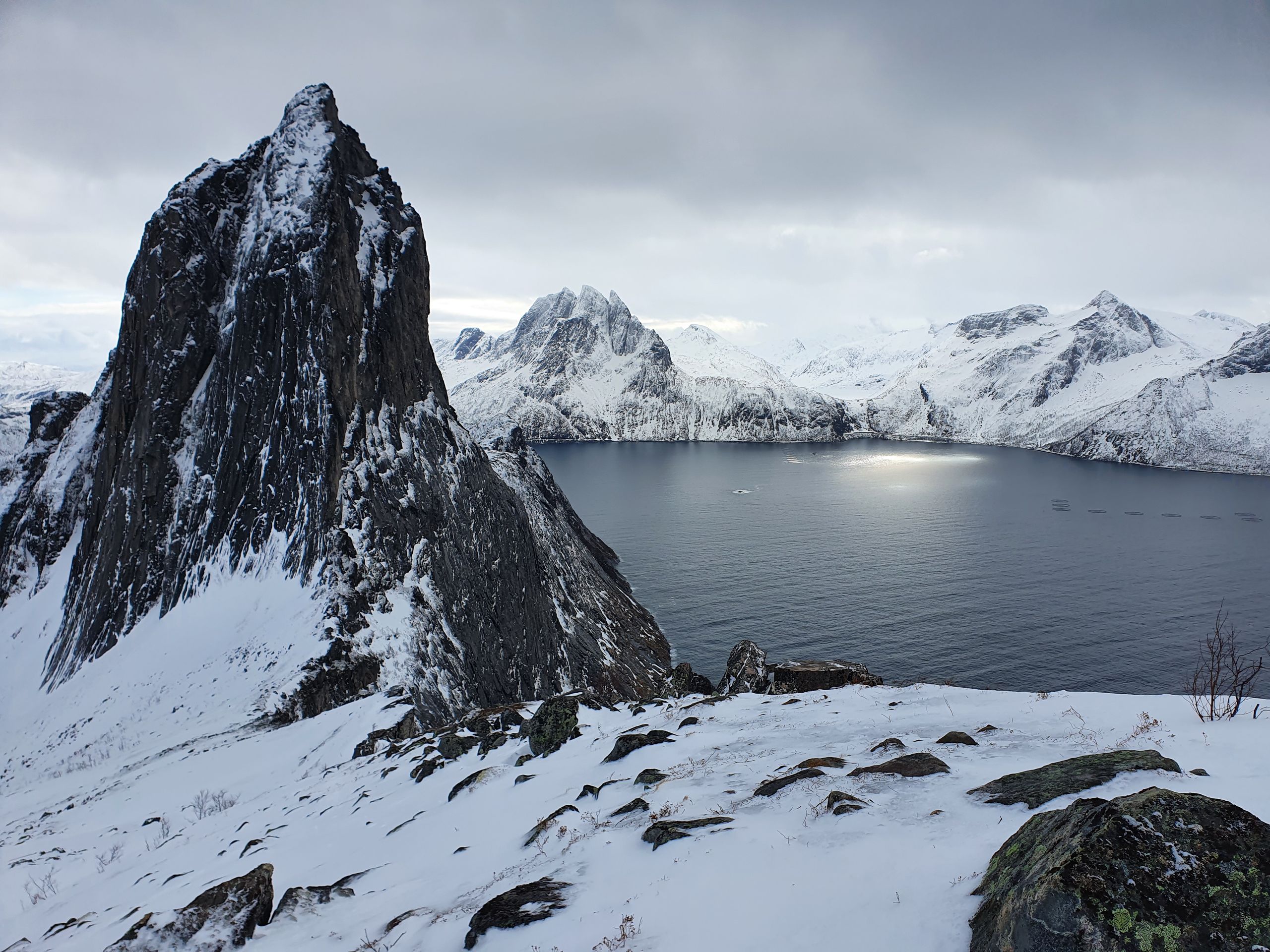

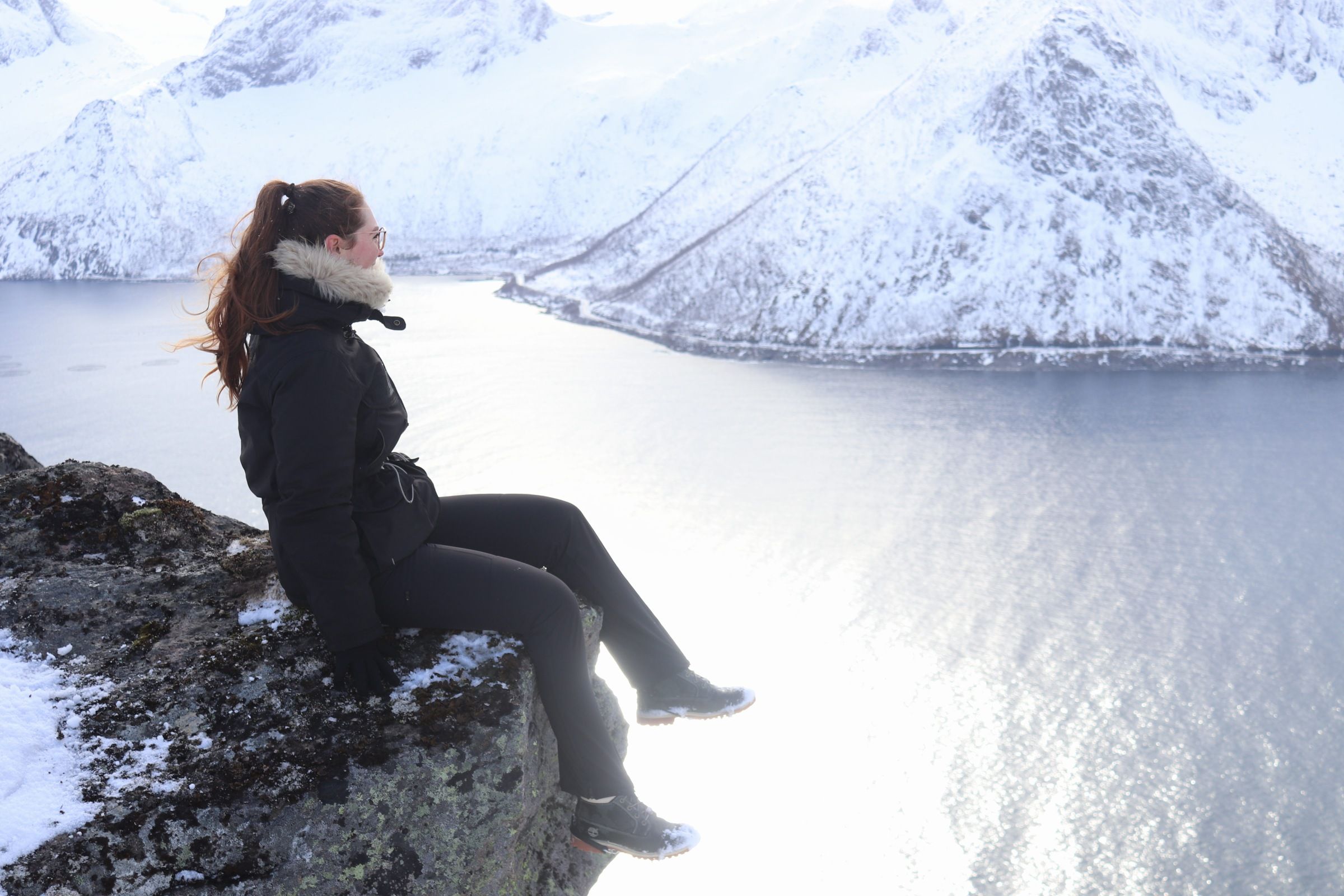
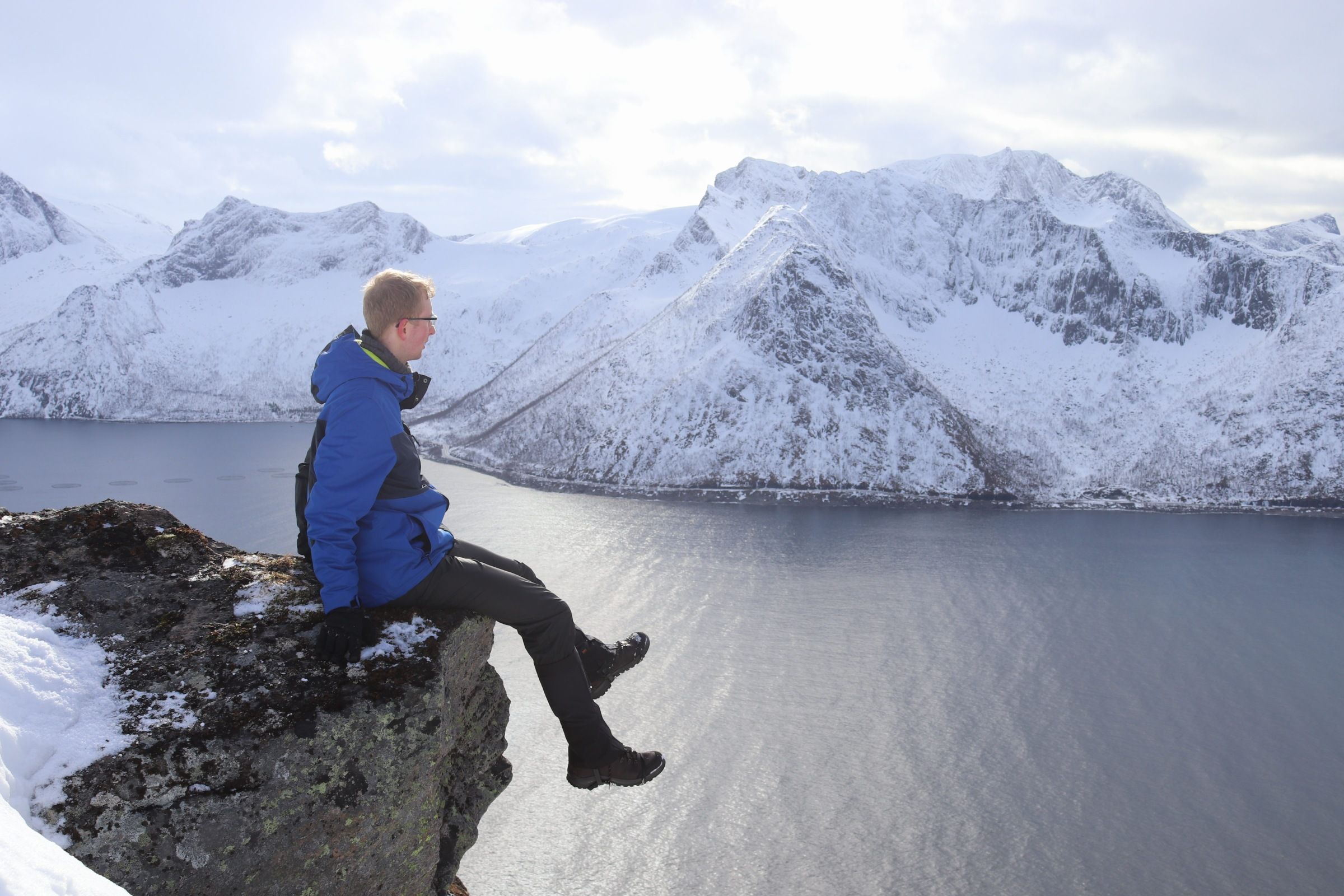
In such moments, one inevitably wonders how long one would fall in an unfavorable situation. Snowballs that we threw over the edge took about 10 seconds. As the others waited for me, I climbed further up to the summit of Hesten until the terrain steepened to about 45° and I could only hold on with all fours and my spikes. The climbing and the view were definitely worth it. Only when I wanted to descend again did I realize that 45° are not easy to handle. The safest option seemed to slide down most of the way on my pants - and what the hell, it was much fun. After sticking my heels into the icy slope to stop my movement, I ran the remaining way to my group with a grin and the certainty that I had found a new hobby for the trip.
After taking a few nice photos, we started our way down and I could brag to my companions about my new mode of transportation (which caused more astonishment than anything else from Gero and the girls). Having gained a good distance, I used the time to explore the small and huge scattered rocks off the trail. The gaiters were worth their weight in gold in the deep, natural snow, and they took freedom of movement to a new level.
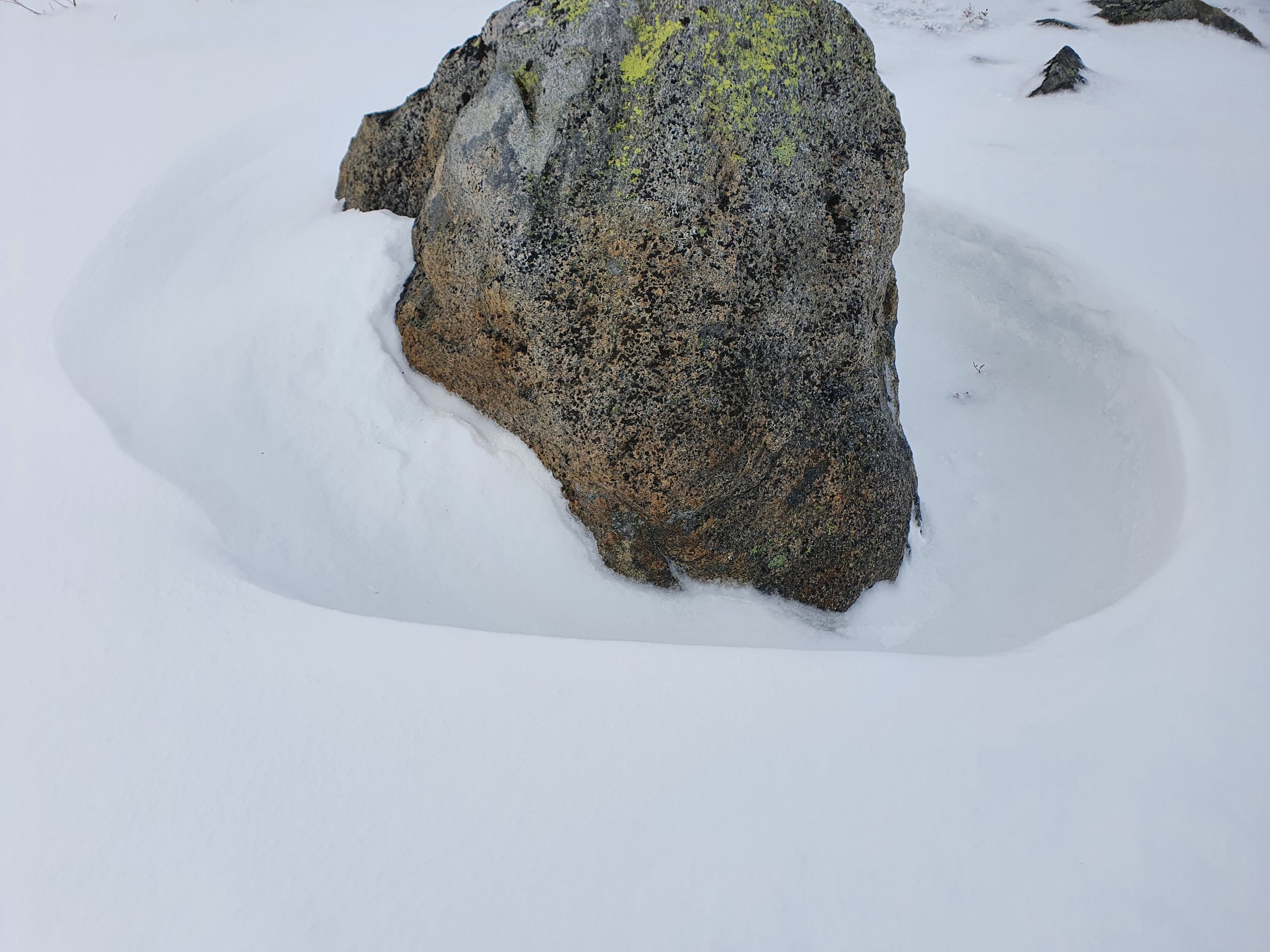
Under a large rock, there was a collection of smaller rocks that supported it, creating a cavity underneath that could almost be called a cave. Fascinated, I took the opportunity to see if I could catch a glimpse of one of the rare cave-dwelling moose that devour humans. Sliding flat on my back into the cave without a backpack, I took a few pictures of the ice formations on the ceiling before putting my phone back into the open chest pocket of my jacket to have a free hand and go deeper. I naturally missed the absent feeling of a hard rectangular object when I touched the jacket pocket again. Knowing that I was moving on uneven ground made of rocks, I had the evil premonition that I had gotten myself into a huge mess and my phone would be preserved in some rock crevice below me for future generations. After half a minute with a racing pulse and beads of sweat on my forehead, I saw a strange white glowing snow half a meter below me. The screen must have turned on to get my attention. Fishing out my device, I decided to abandon the cave and join my companions with a newfound lightness, knowing that I had narrowly escaped disaster.
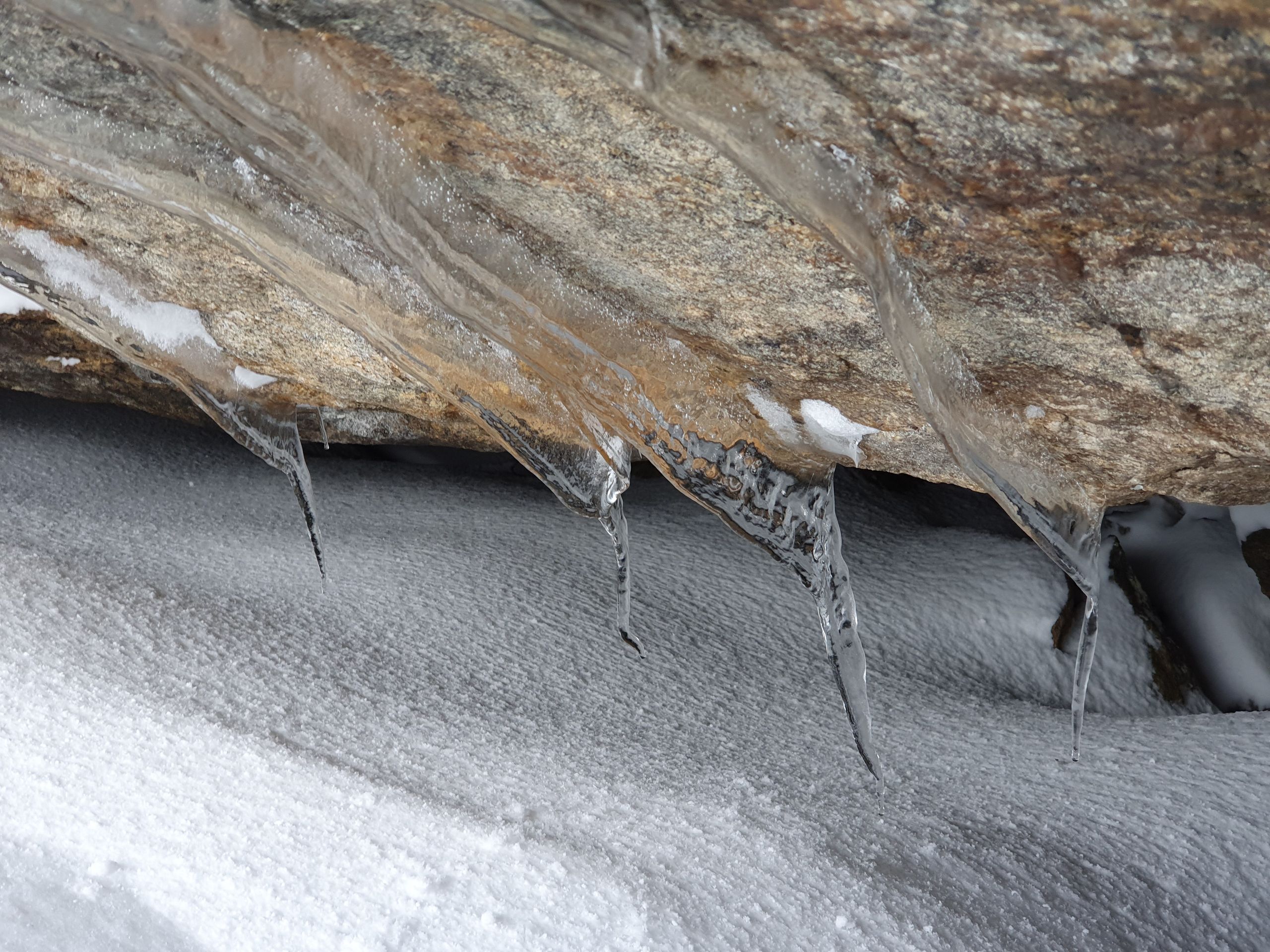
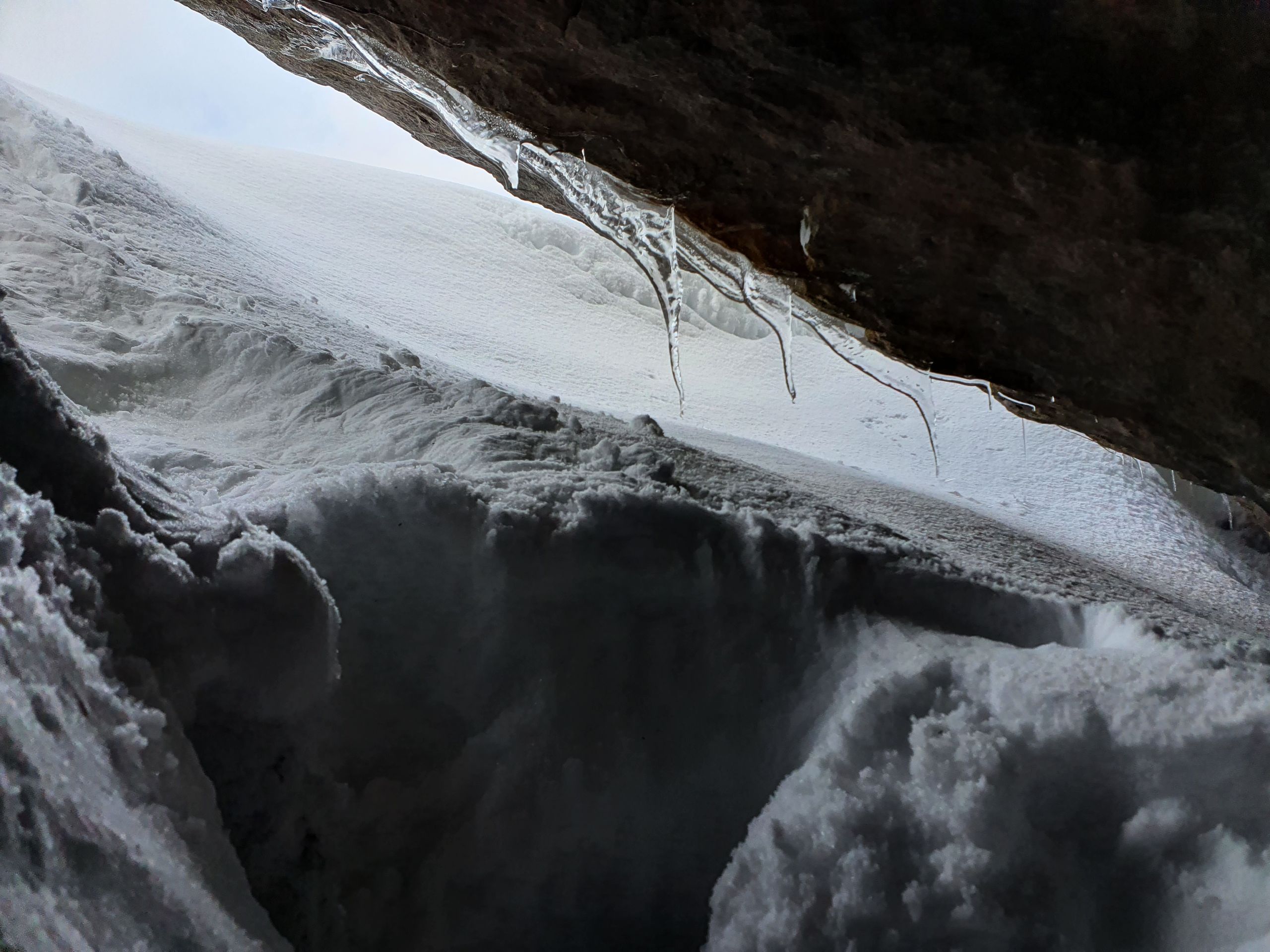
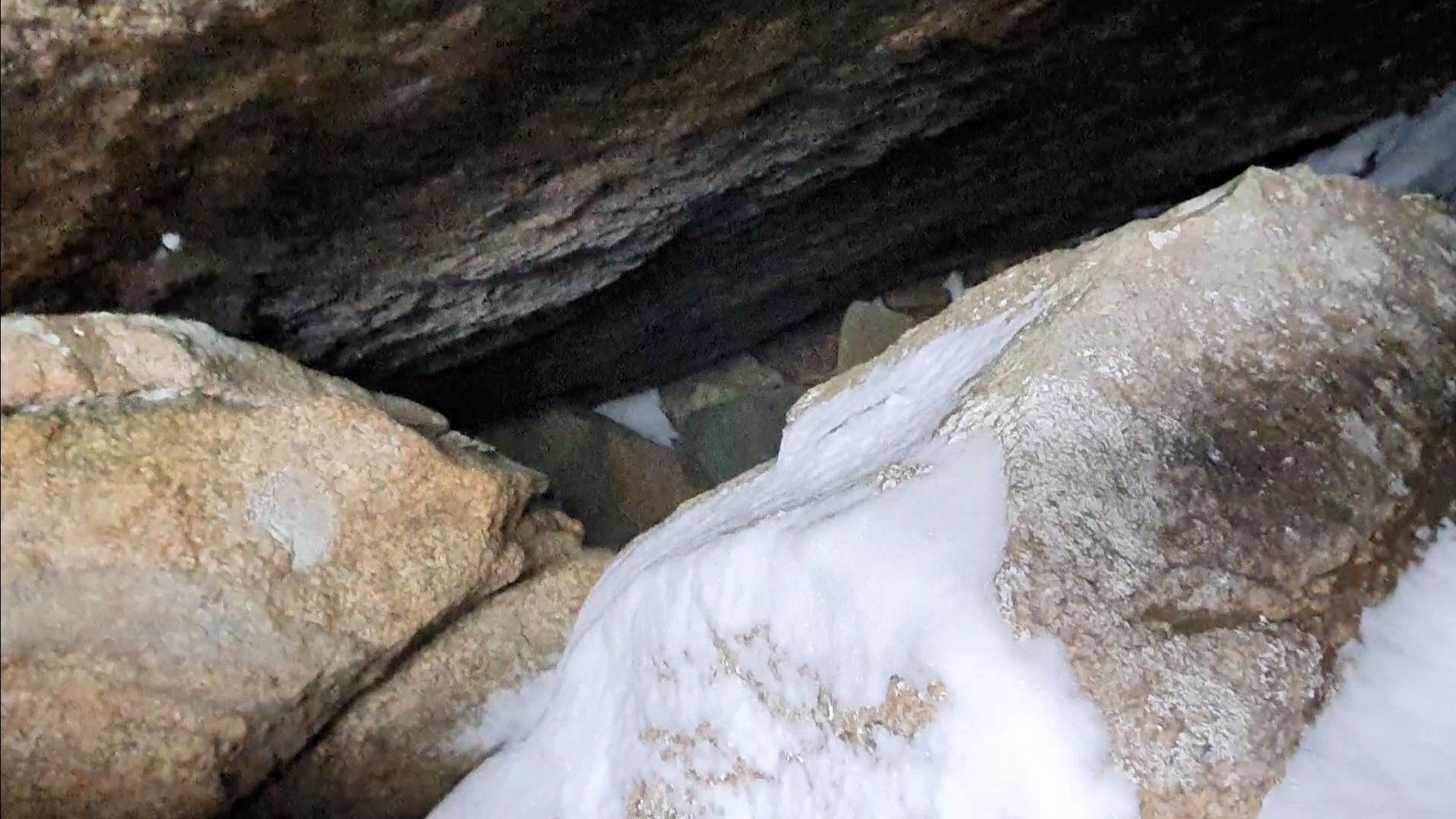
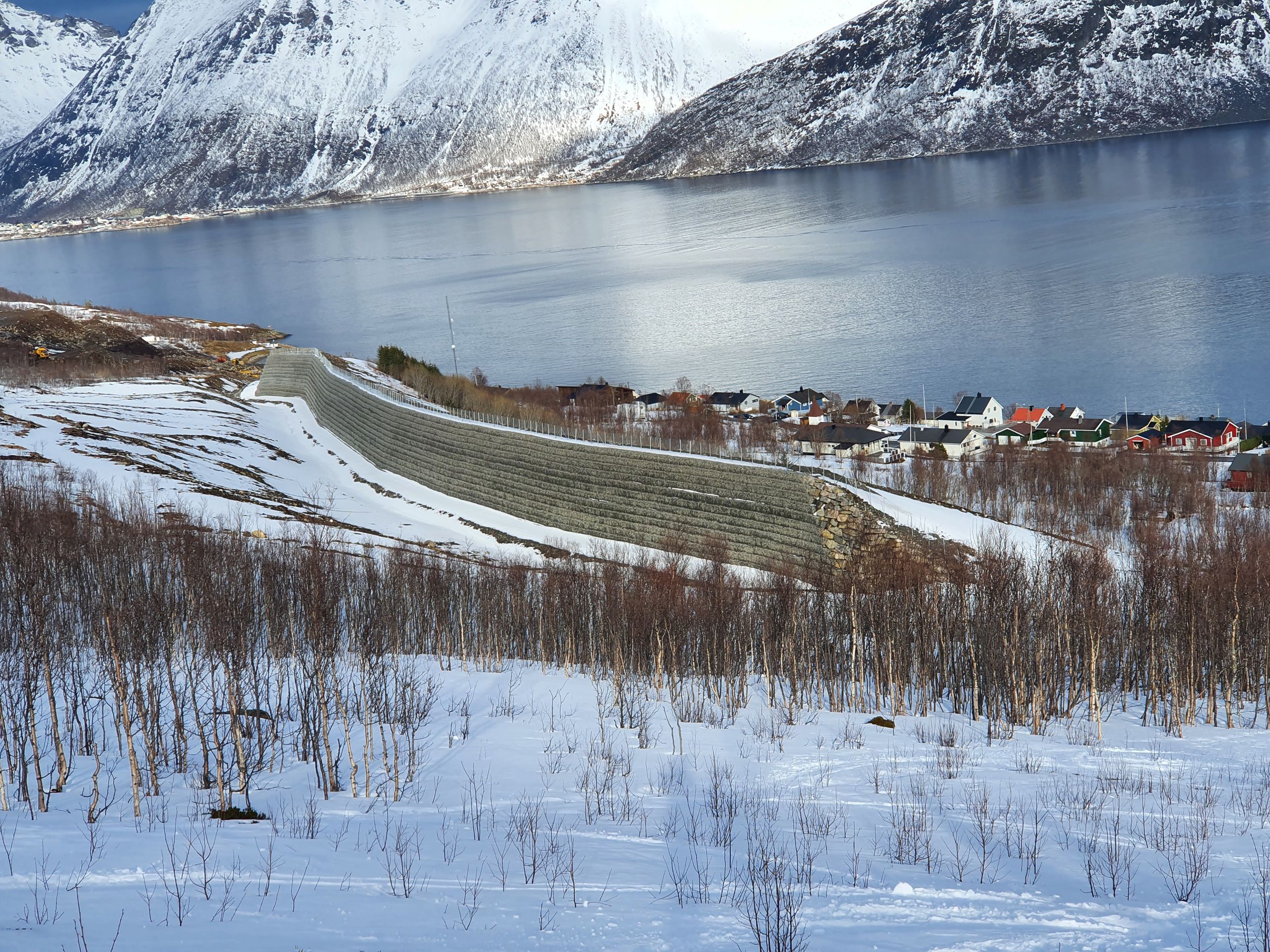
Since we still had some time until sunset, I researched a second summit that we could climb nearby. This one was already visible from Hesten and we only had to go around the fjord. It took some effort to convince my companions of the fabulous idea of tackling a second summit, but they all agreed. During the ascent to "Riven," we noticed the even deeper snow and that the summit could only be reached via a narrow, snow-covered ridge. As a result, my companions decided to turn around and let me continue my "doom" (I found the ridge to be unproblematic...). Before parting ways, we agreed that I would try to descend the other side of the ridge and wait for them at the road below, while they would walk back to the car and drive it to the other side of the mountain. After enjoying the setting sun in the mountainous coastal landscape, I looked for a not too steep spot where I could "descend" the mountain.
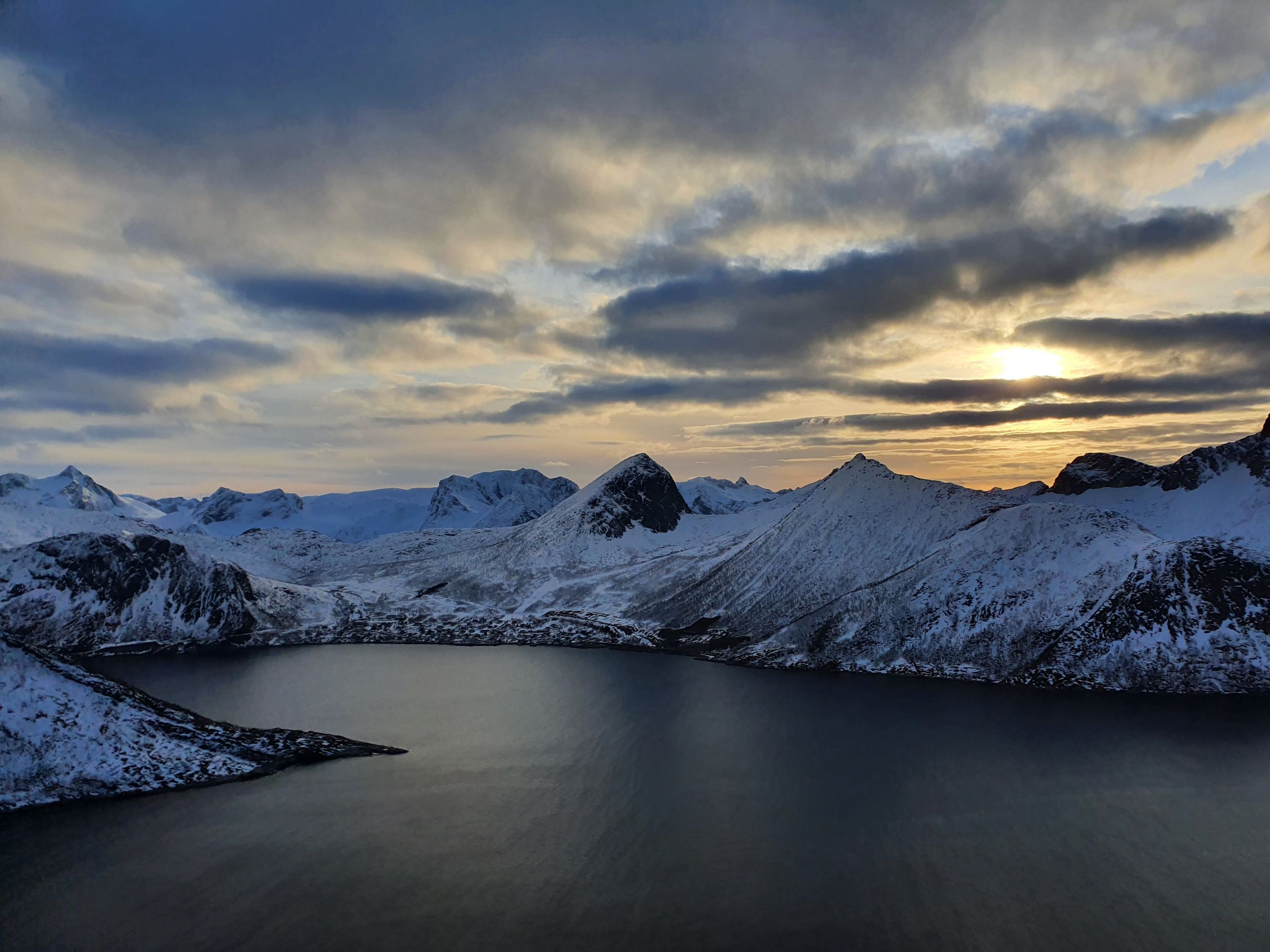
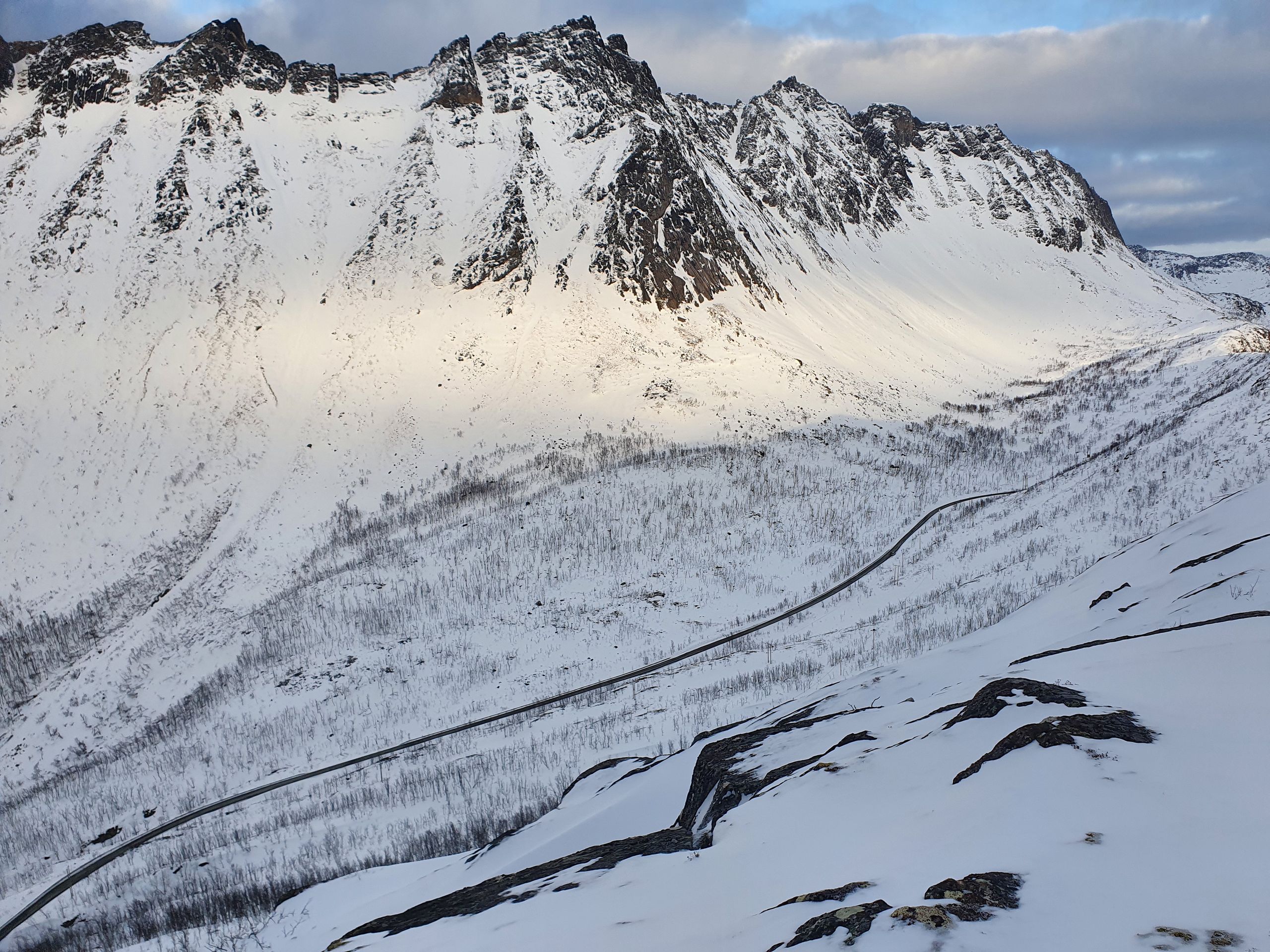
As I had hoped, the climbing could be replaced by a good amount of sledding, and after 10 minutes, I was on the road (compared to 45 minutes of ascent). So I had to wait for my pickup committee for quite some time. Following the road with my gaze, I spotted a small island that was covered with houses despite its size. The sight was quite cute, and a visit would definitely be worthwhile. Also funny - a car came towards me on the road, stopped about 300 meters in front of me, and an elderly lady got out and started walking down the road to the island, while the car continued in the same direction. The lady passed by me and continued her brisk walk. This just goes to show how much Norwegians value outdoor activities. Sometimes the most relaxed way to reach a destination is not always the most fulfilling way!
Shortly thereafter, I heard the familiar whistle of my roof box in the distance. An unmistakable sign of the cavalry. I took the wheel and we drove to the small island of "Husøy." What immediately caught our attention, in contrast to the cute appearance, was a comprehensive sharp smell in the air. The smell of fish. Of stored fish. Of stockfish. We saw wooden racks on which thousands of fish heads were hanging to dry and wondered if it was really such a good idea to take a break on the island with some coffee and chocolate. However, since I had forgotten to switch to recirculating air, the hope of escaping the smell quickly evaporated, and we could already "enjoy" the atmosphere in the car. So we found a bench on Husøy and experienced the exclusive ambiance. On our way back, we also stopped at the wooden racks to take a closer look at their stored products.
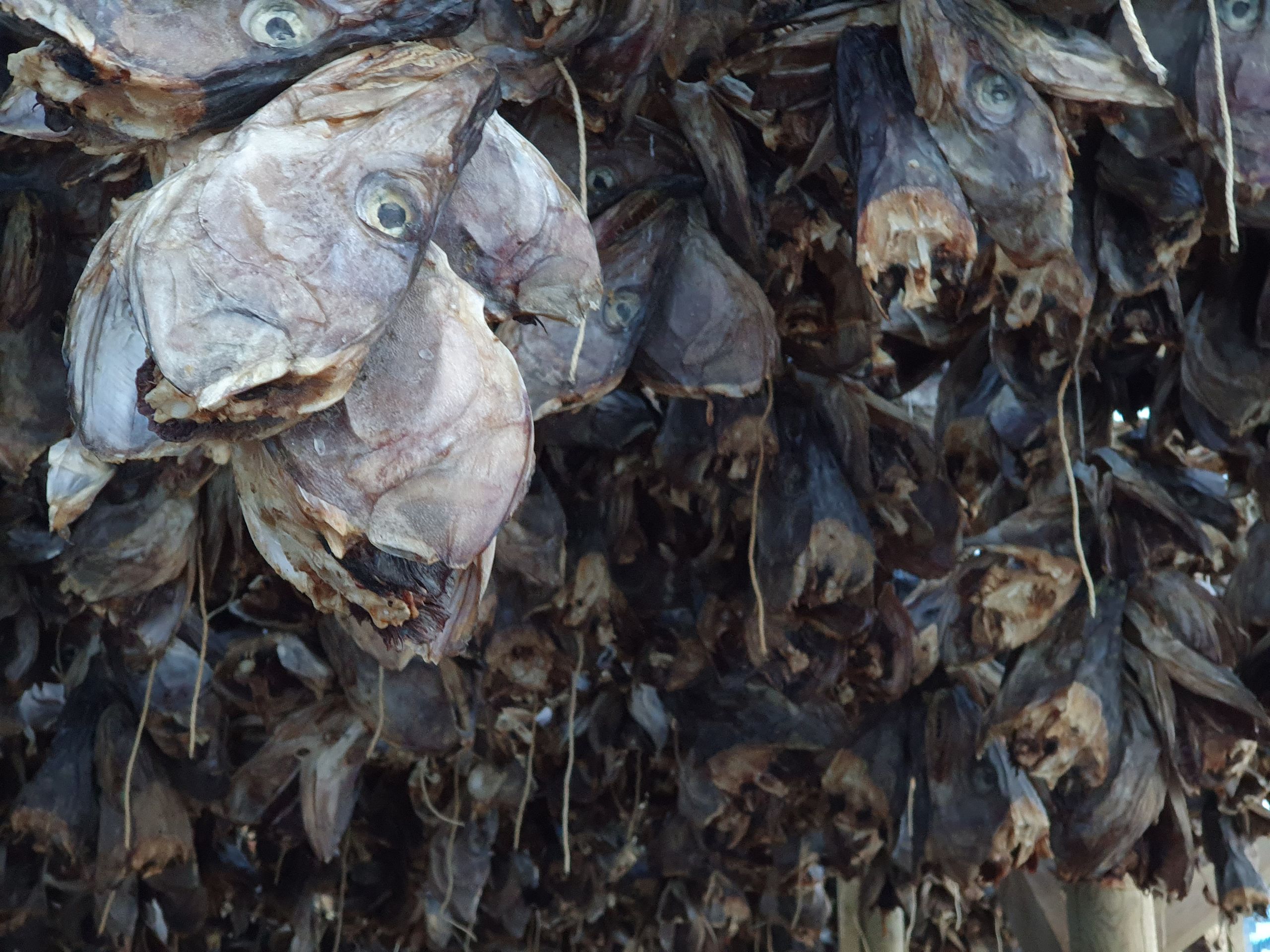
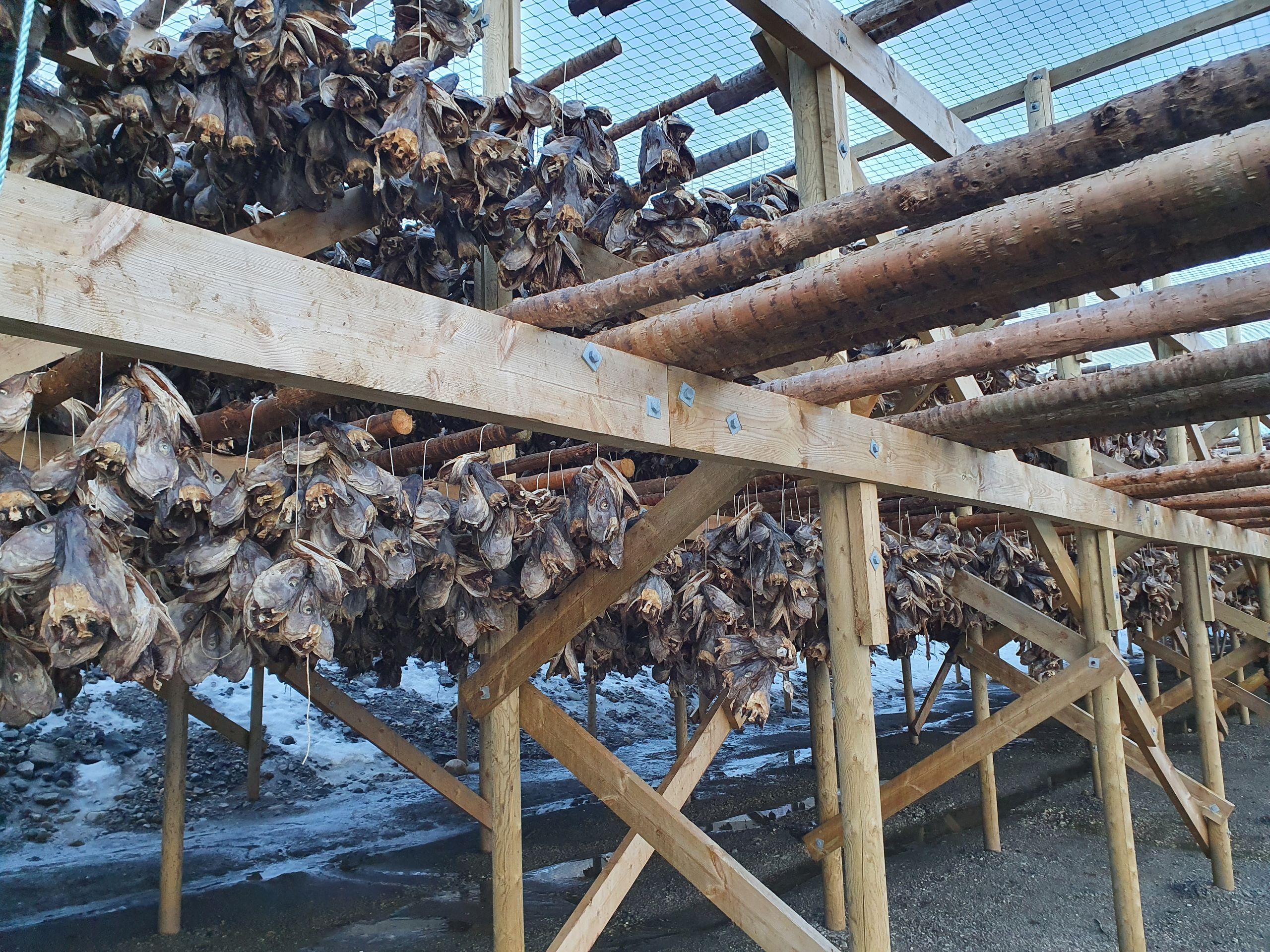
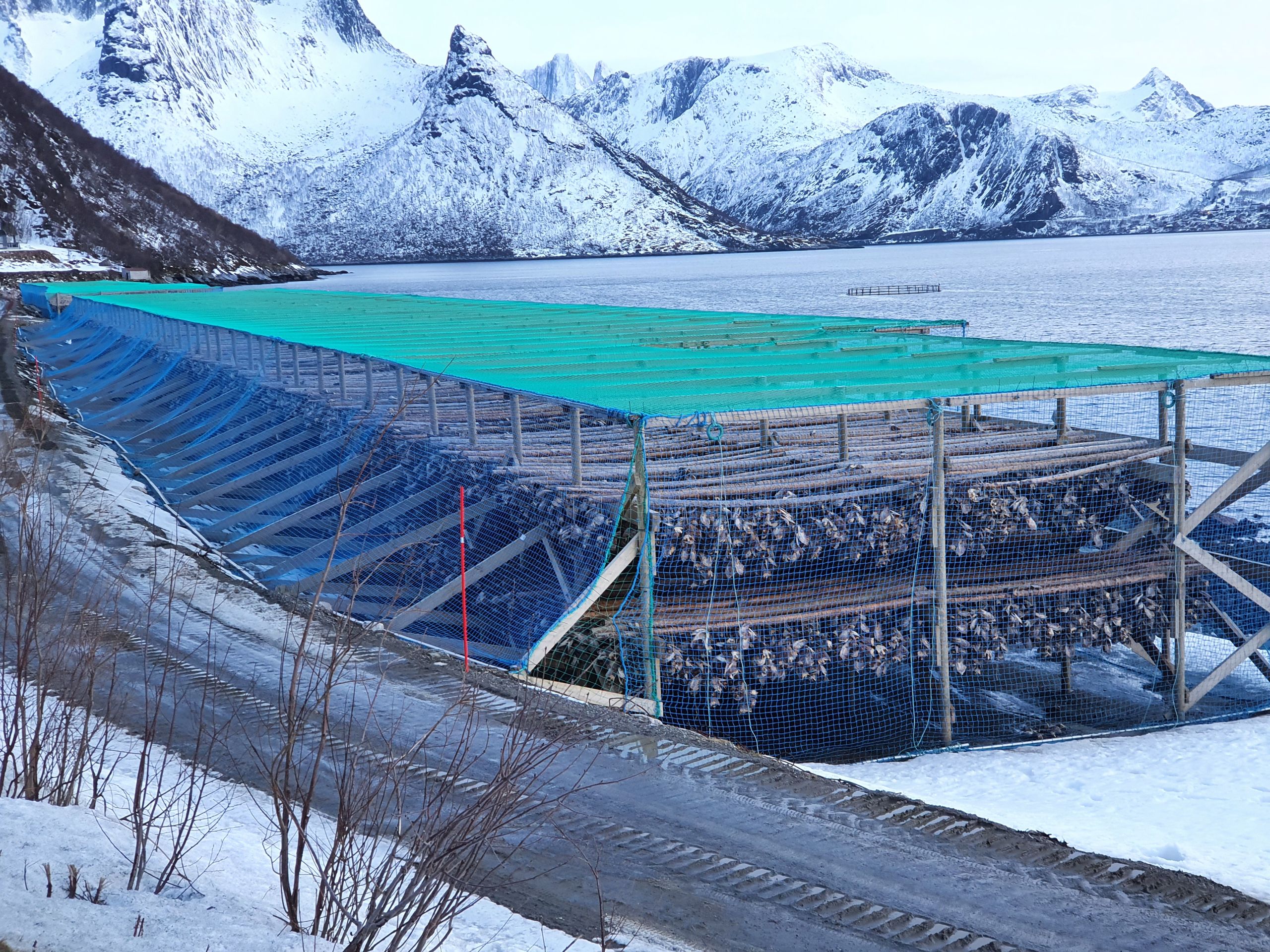
The large cod heads made quite a grotesque impression. But historically, the population has always lived from this product, and efforts are being made to keep the tradition alive. However, this is difficult nowadays, as the stocks of cod are also noticeably declining for the fishermen. The fish heads are actually intended to be exported to West Africa, where they become the main ingredients in traditional fish soups. This efficient use of all the caught fish. After pondering these topics, we set off for our accommodation. Not only the sight of the stockfish remained in my memory, but my jacket also seemed to have flirted too much with the smell of stockfish and continued to provide my companions and me with a very atmospheric smell for the following days.
On the following day, I planned to climb one of the highest peaks in Senja. "Gryttetippen" promised to be a challenging day trip, and the plan was for my companions to tackle a different summit nearby. At the starting point of the Gryttetippen route, we met some Norwegians who had already completed the ascent and descent on skis (it was noon). They were quite surprised by my plan to tackle the summit without snowshoes or skis. They pointed out that there was a certain risk of small avalanches at this time. After downloading the recommended forecasting program and studying my route, I decided to join my companions after all. Not because there was a great risk for my route, but because sometimes I also have a safety feeling (yes, I actually have that!) and the alternative summit of my companions still represented a fantastic, albeit not very high, alternative.
So we set off for Husfjellet. The avalanche risk here was negligible due to the slope gradient. The ascent began through a forest, which soon thinned out. Of course, the Tromsø group came towards us. Under very seriously amused comments like "in Senja, there are only two mountains to climb," we asked them about the trail and how to reach the summit. They were returning because the snow on the summit had become increasingly icy and the gradient was also increasing. The forest turned into a small birch forest, which soon turned into the Fjell terrain (Fjell = mountain) due to the altitude.
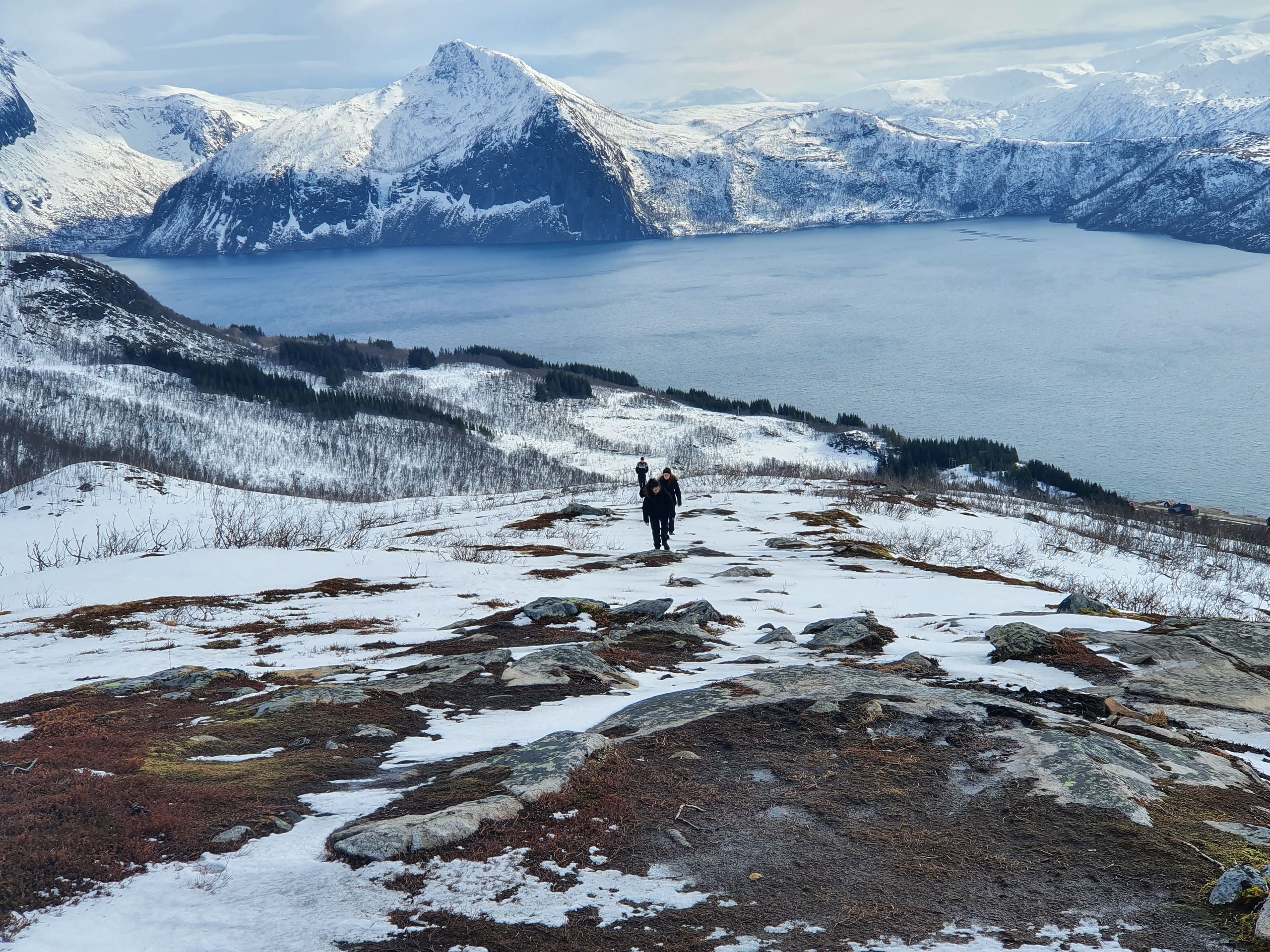
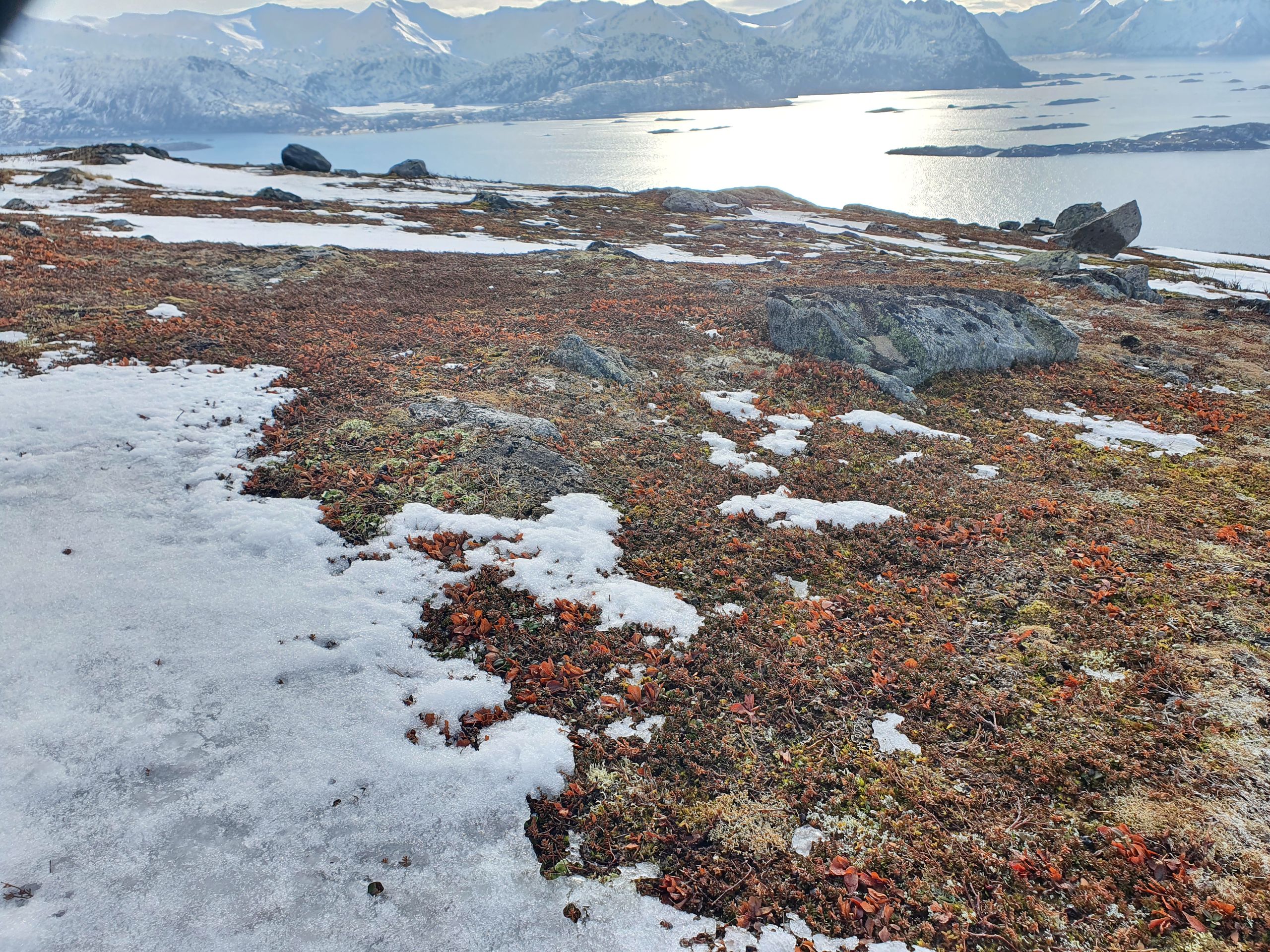
Here and there, the mossy ground broke through the snow and provided a foretaste of what hiking here would be like in the summer. With the summit already in sight, my companions decided to turn around. I looked to see how far I could continue towards the summit. At the point where we separated, a snow overhang ran 10 meters away from us, under which the mountainside sharply collapsed. It was clear that I should always keep a safe distance from the overhanging snow, no matter how solid it seemed. I couldn't reach the summit itself because the wind and the terrain became increasingly rough and unsafe. However, under the literally radiant sun, I still had a great panoramic view.
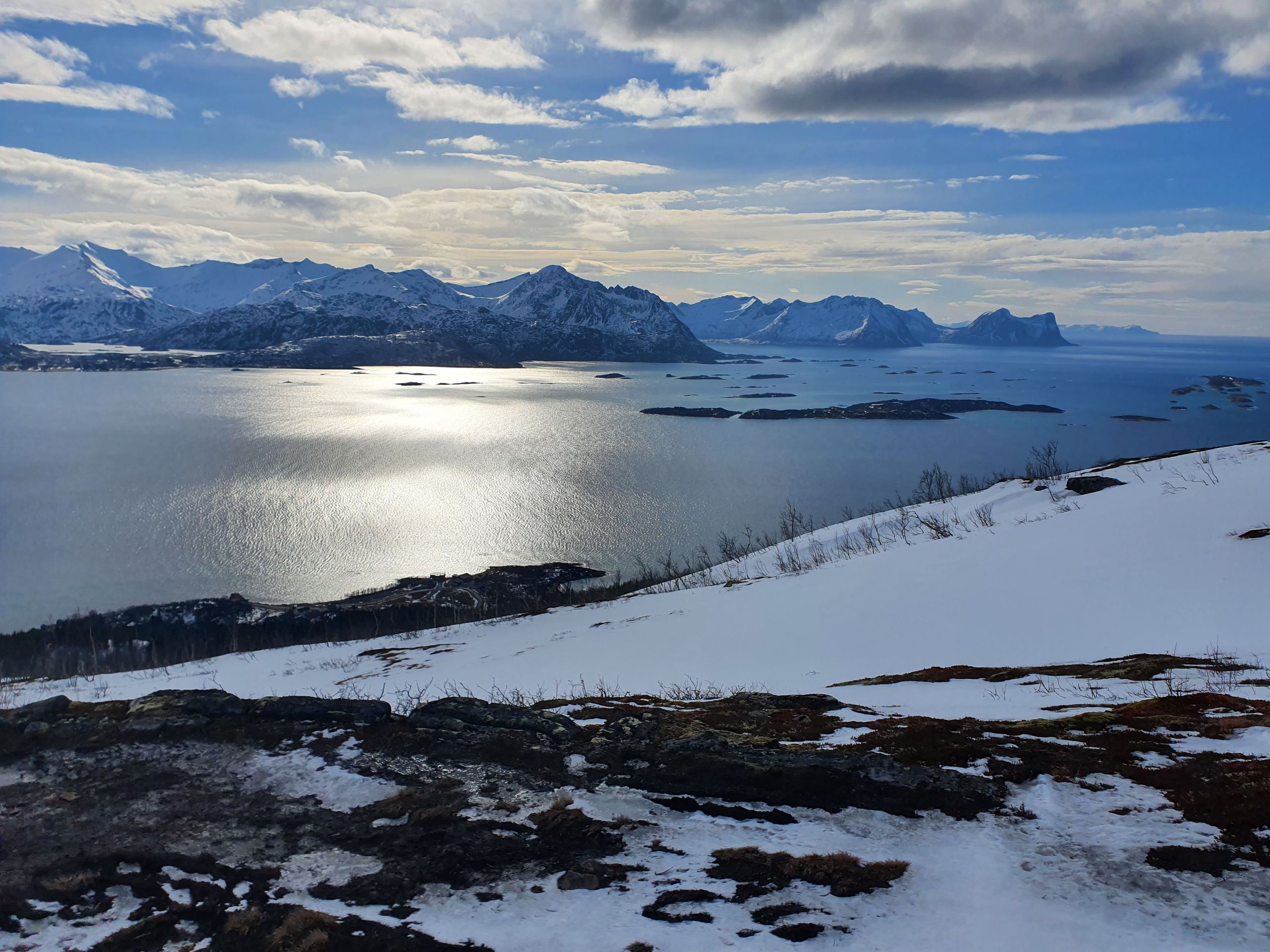
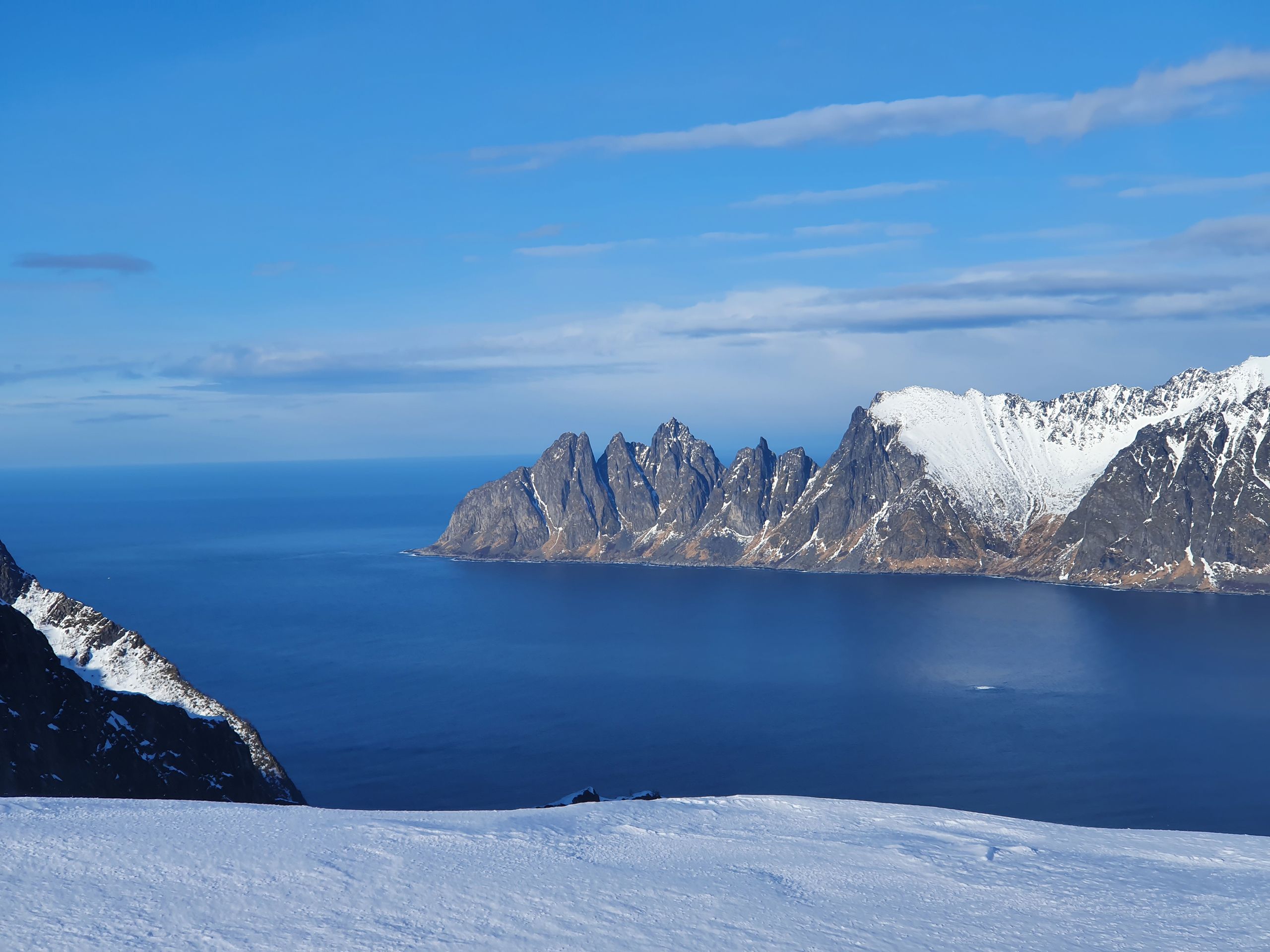

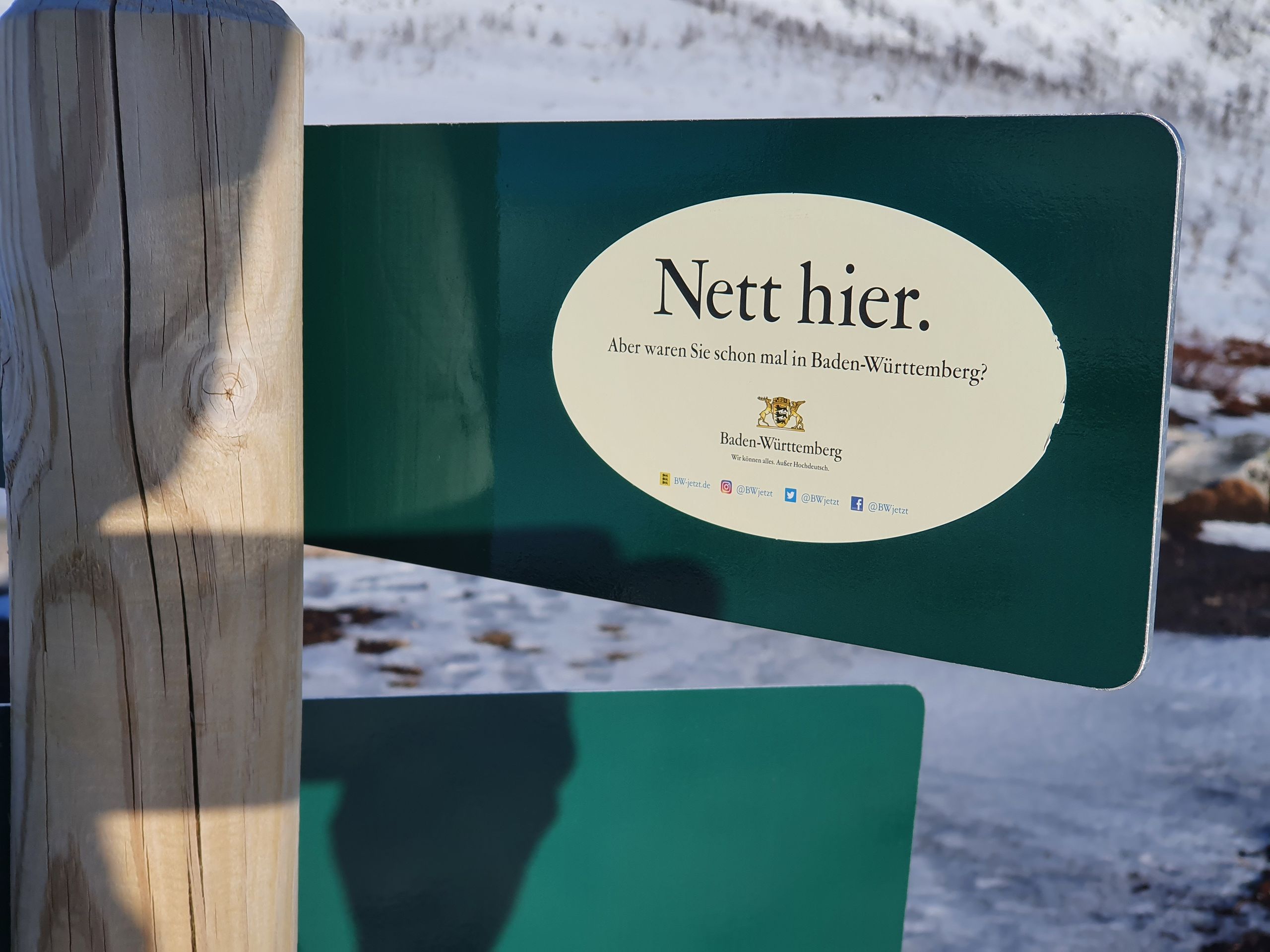
I soon caught up with my companions, and they asked me what I thought of the sea eagles that were supposedly flying right above me. Unfortunately, I had missed them, but in Senja and Lofoten, there are often opportunities to observe these majestic birds of prey. The bright sun increasingly gave me the impression that, despite being masked in a scarf and hood, I had gotten a certain redness. In this sense, the winter landscape deceives with a deceptive sense of security, which occurred to me somewhat late. The increasing sunset brought a golden atmosphere to the birch forest, and apart from the urgent need for a toilet, we were in good spirits. Sprinting through the soft deep snow is also a lot of fun with gaiters and once again illustrates that "hiking" can be anything but monotonous (even if you stumble and go horizontally).
As we could observe one of the many beaches from our ascent, we decided to additionally explore this nearby beach after the hike. In the evening light, this place seemed somewhat surreal, and only the temperature reminded us that we were not on a tropical beach but on an Arctic one.

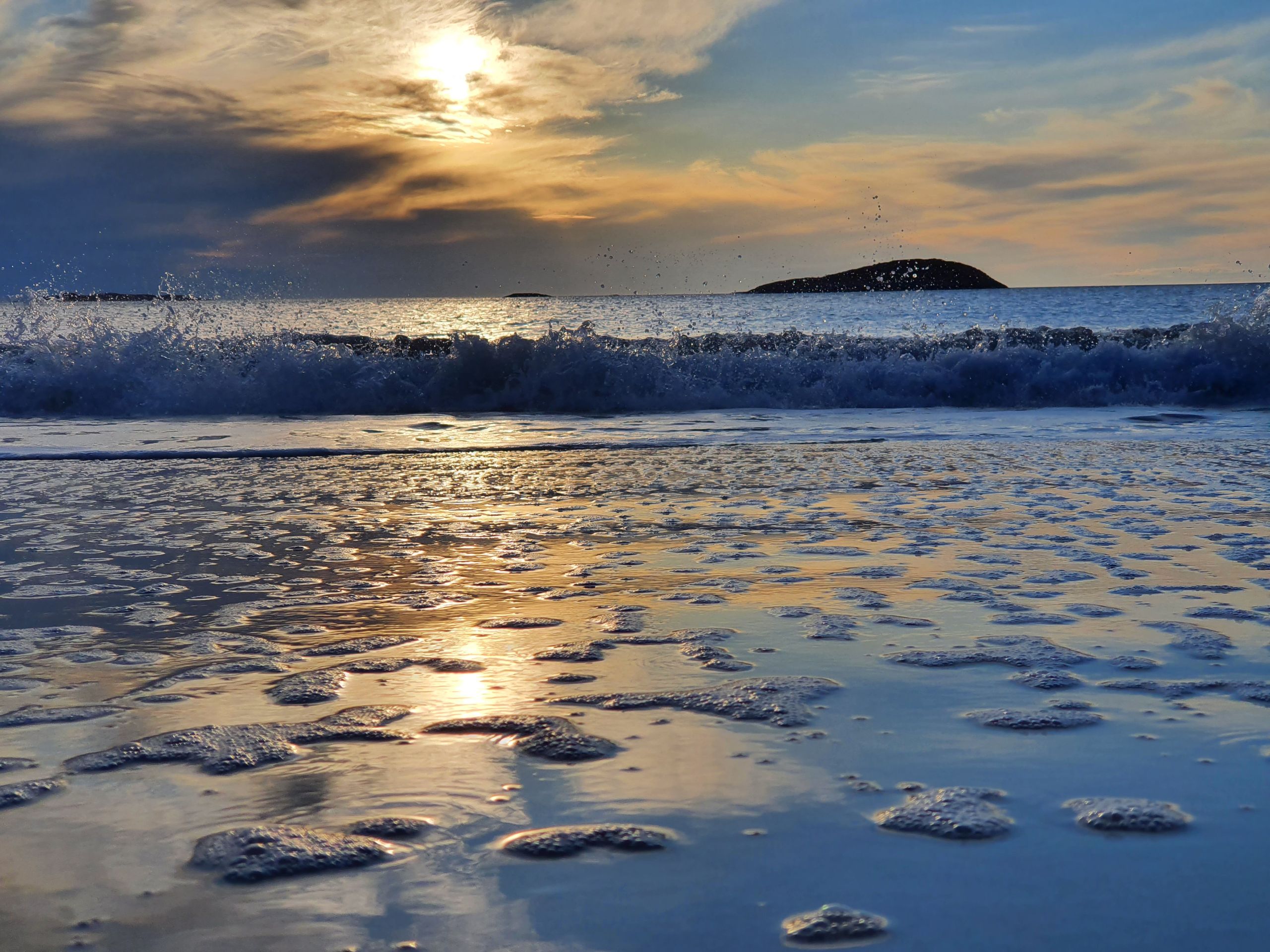
Not only the waves in the evening light were a subject of interest. The beach turned into rocky terrain on the sides, where large stones offered an opportunity to indulge in exploration. When jumping from stone to stone, you can notice these tidal pools, which are also quite colorful with all sorts of aquatic plants, corals, and occasionally sea urchins. Each jump held the possibility of seeing something new. Sometimes you really find the most interesting things right under your nose. You just have to take a look! 😊
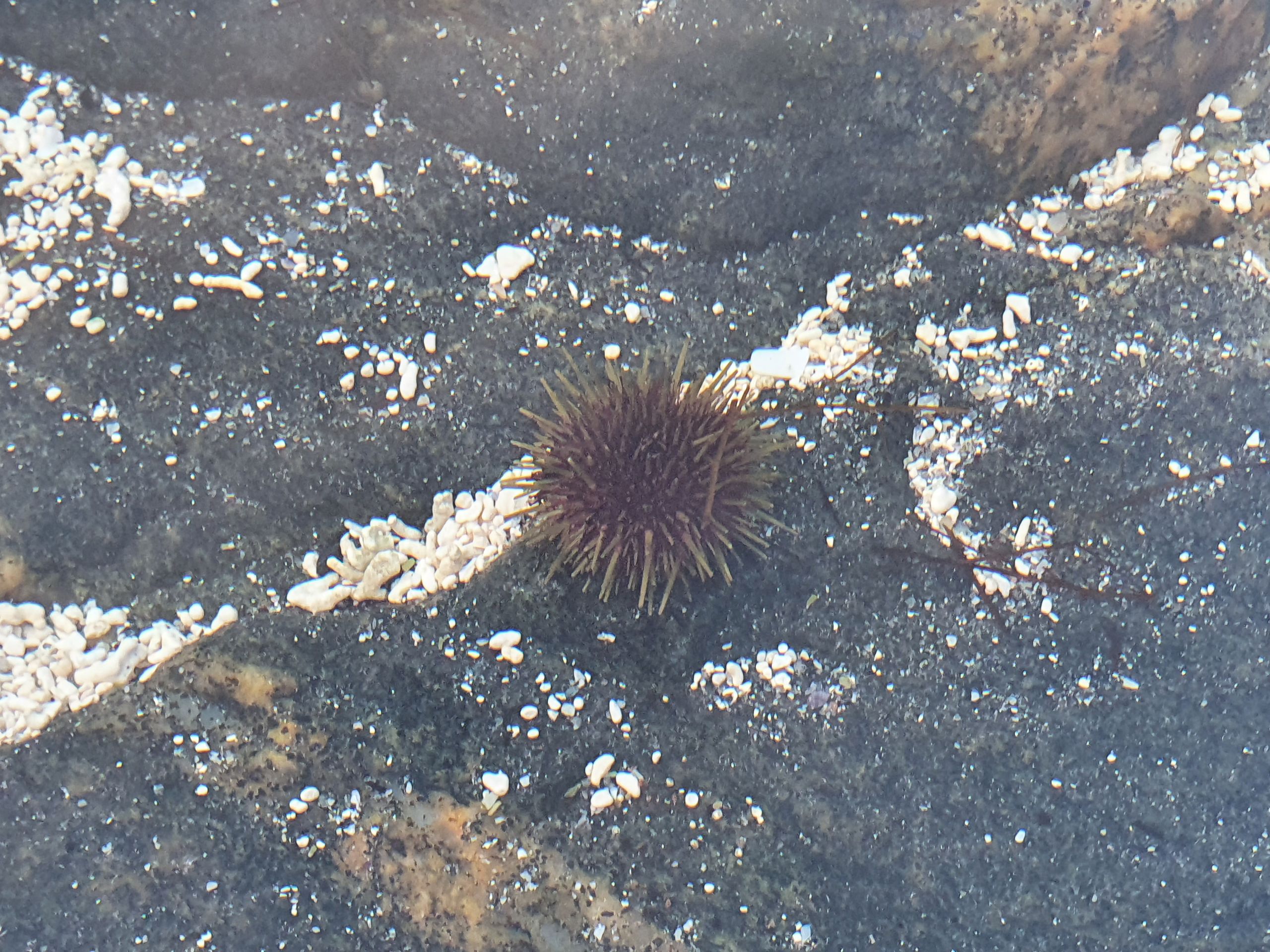

On the way back, we were completely satisfied and only made one more stop at one of the famous architectural viewpoints. "Tungeneset" gave us a close-up view of the jagged outcrops in the Mefjord from a different perspective. The interplay of the evening red on the horizon and the black granite peaks is hard to describe, but definitely impressive.
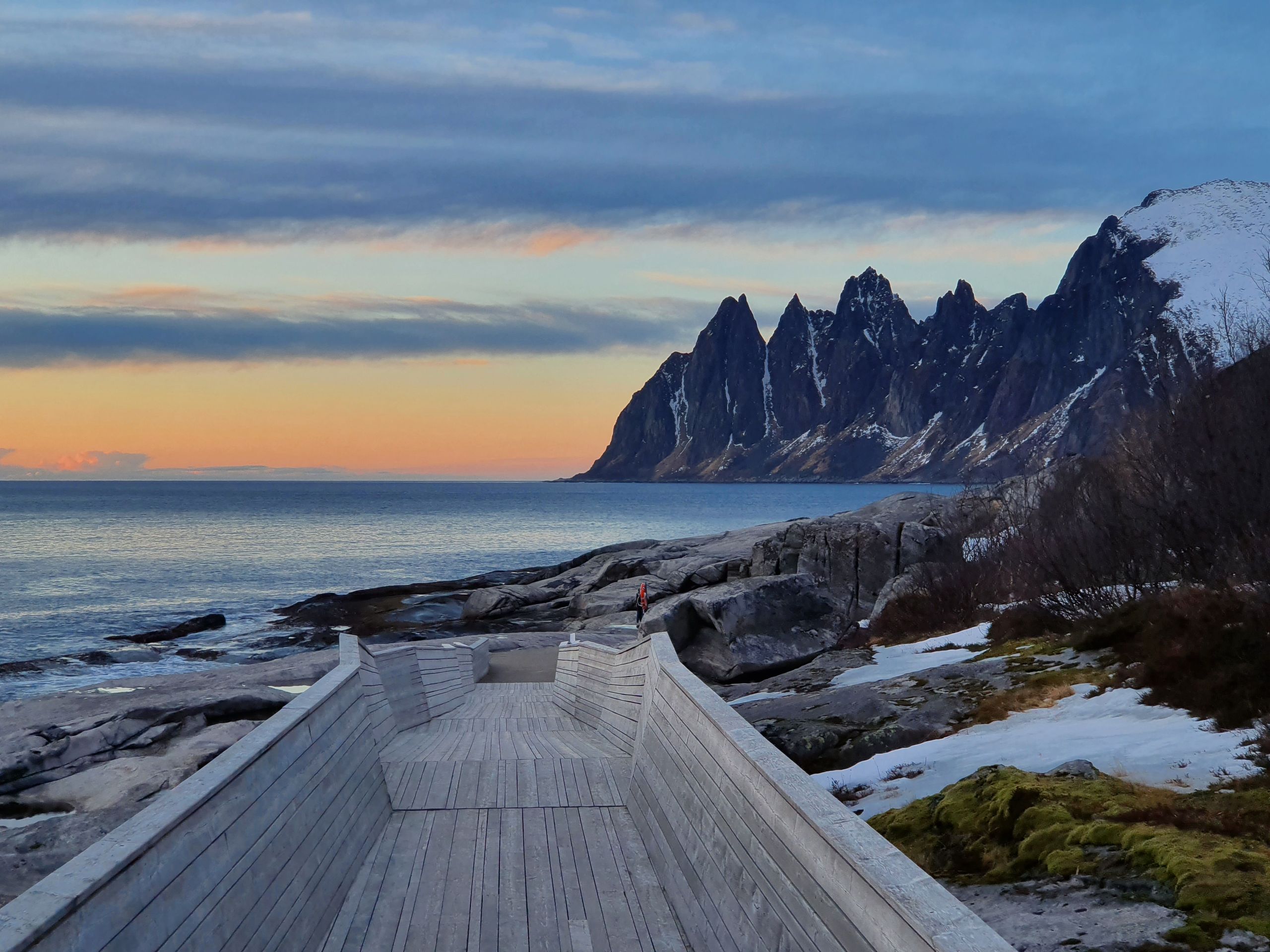

We wanted to spend the last day in Senja on the road to see the entire coastline. A few days earlier, a fellow student had messaged me that they were also visiting Senja at the same time. Their accommodation was in Gryllefjord and, coincidentally, on the other side of Senja. So we agreed to cook together in the evening. The predicted weather was rainy, and Peperoni got a wash. After a 2.5-hour drive, we arrived in Gryllefjord.

The drive had given me a slightly buzzing headache, and after greeting our hosts and exchanging our experiences so far, I went outside and walked to the pier in the fjord. The silence and the fresh air filled with rain provided some relief, and as I looked out into the fjord, I could even watch two seals sticking their heads out of the water here and there. Standing in the middle of the fjord surrounded by steep mountains covered in rain clouds, just taking in the scenery... Inconspicuous little things like these often leave the most lasting impression. A small fishing boat drove directly along the pier, and as I stood alone on a rock at the tip of the pier, it honked an exclusive greeting to me, and I waved back. Small things like these!
We spent a cozy, although not very long, evening because we still had to start the return journey and wanted to leave as early as possible the next day. And so our stay in Senja ended. Two weeks would certainly not have been enough to see everything. Nevertheless, our next destination was calling. Before heading to Lofoten, we wanted to make a detour to nearby Tromsø and get an impression of how people live in such a northern city.
Subscribe to Newsletter
Freagairt (1)
Thomas
Mensch, Tom, Deine Freunde sind mir sehr sympathisch - die haben eine kleine Portion Vorsicht in sich, die Dir anscheinend abgeht. So sehr ich dich auch dafür bewundere, dass du diese Abenteuer eingehst und diese fantastischen Erlebnisse hast, so sehr gruselt nicht der Gedanke daran - mal ehrlich: auf diese Abbruchkante muss man sich ja nun nicht wirklich setzen. Mir wird vom Bild schon schwindlig... pass ja auf dich auf, sei vorsichtig, Kind!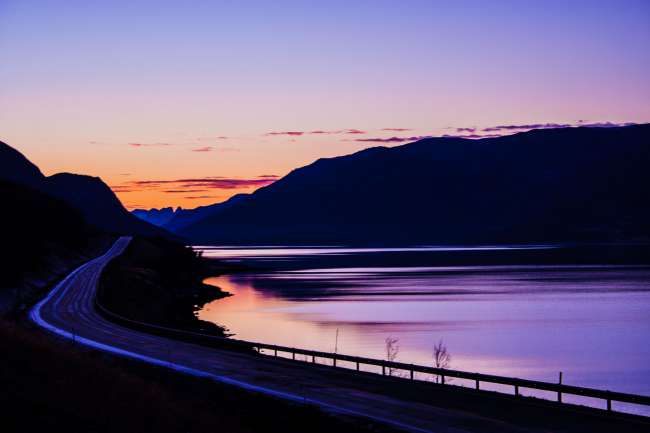
Aithisgean siubhail Nirribhidh
